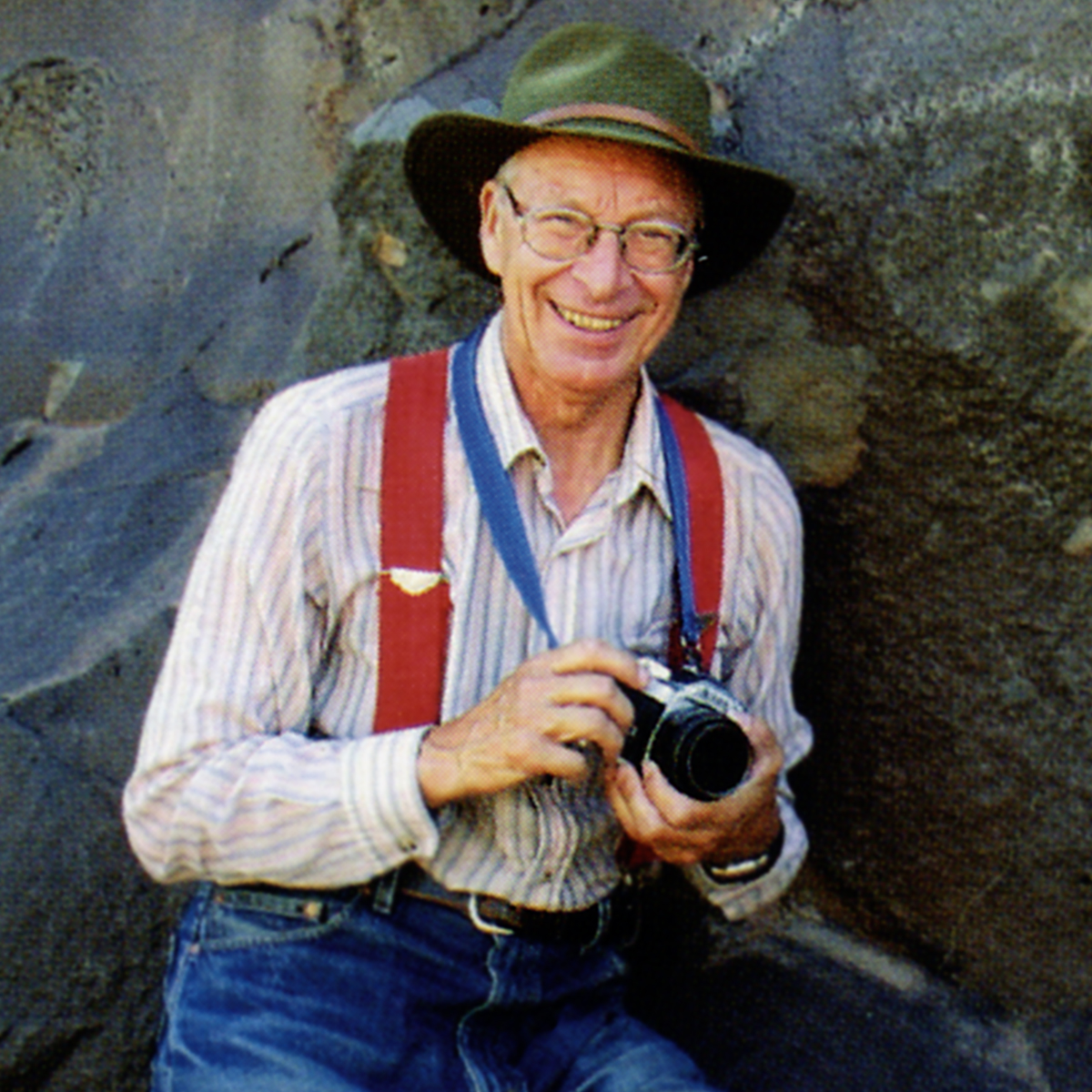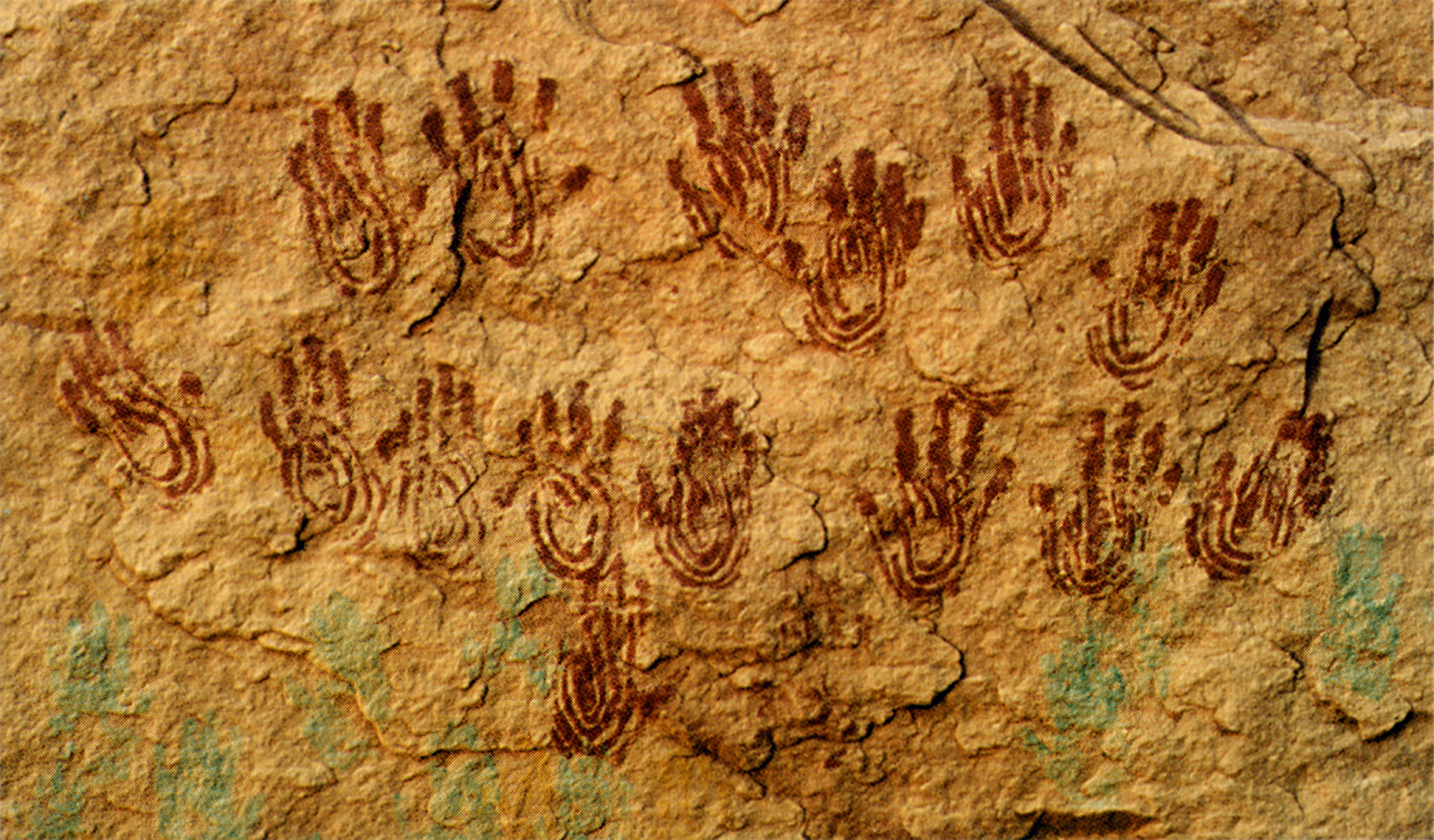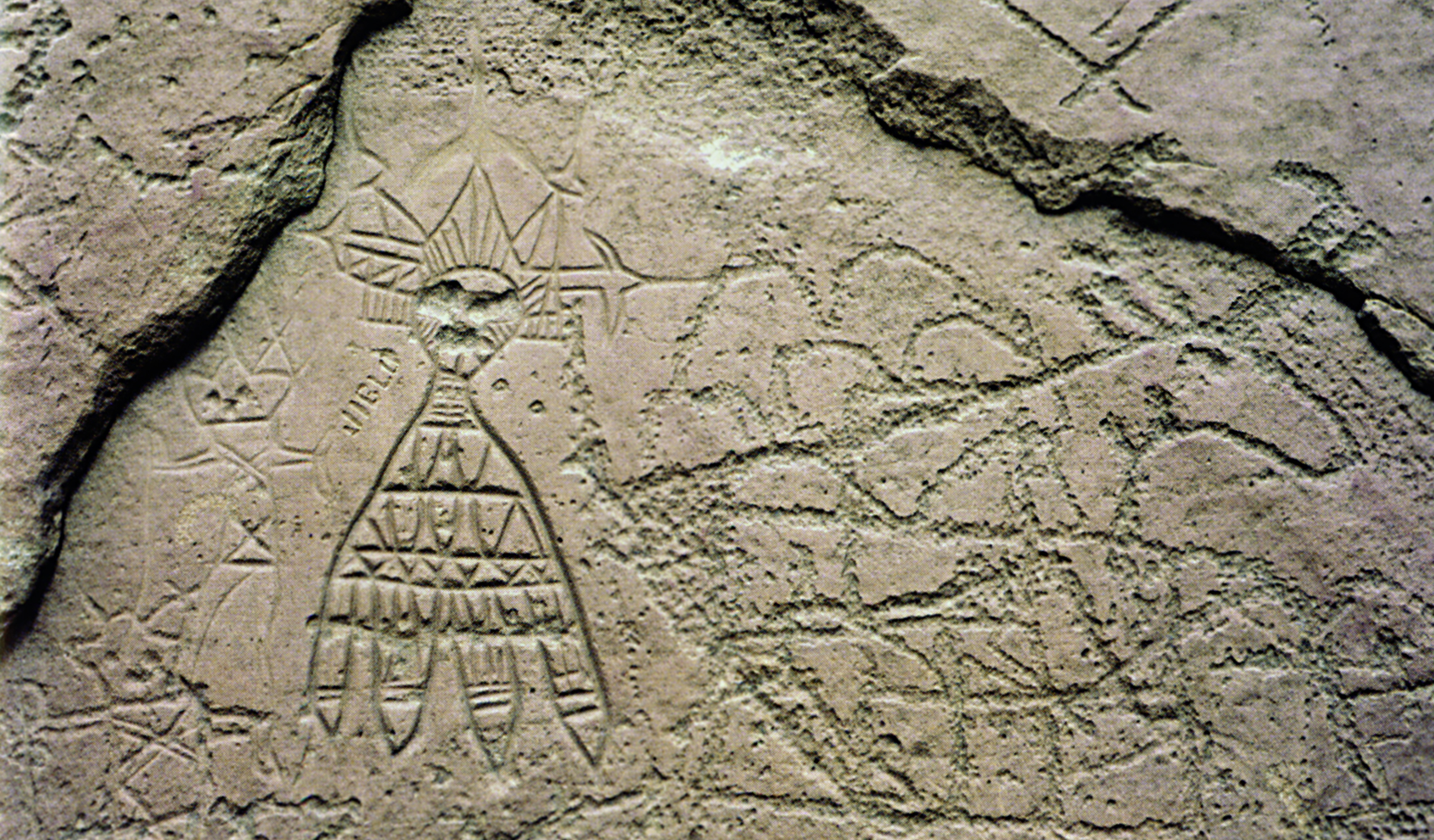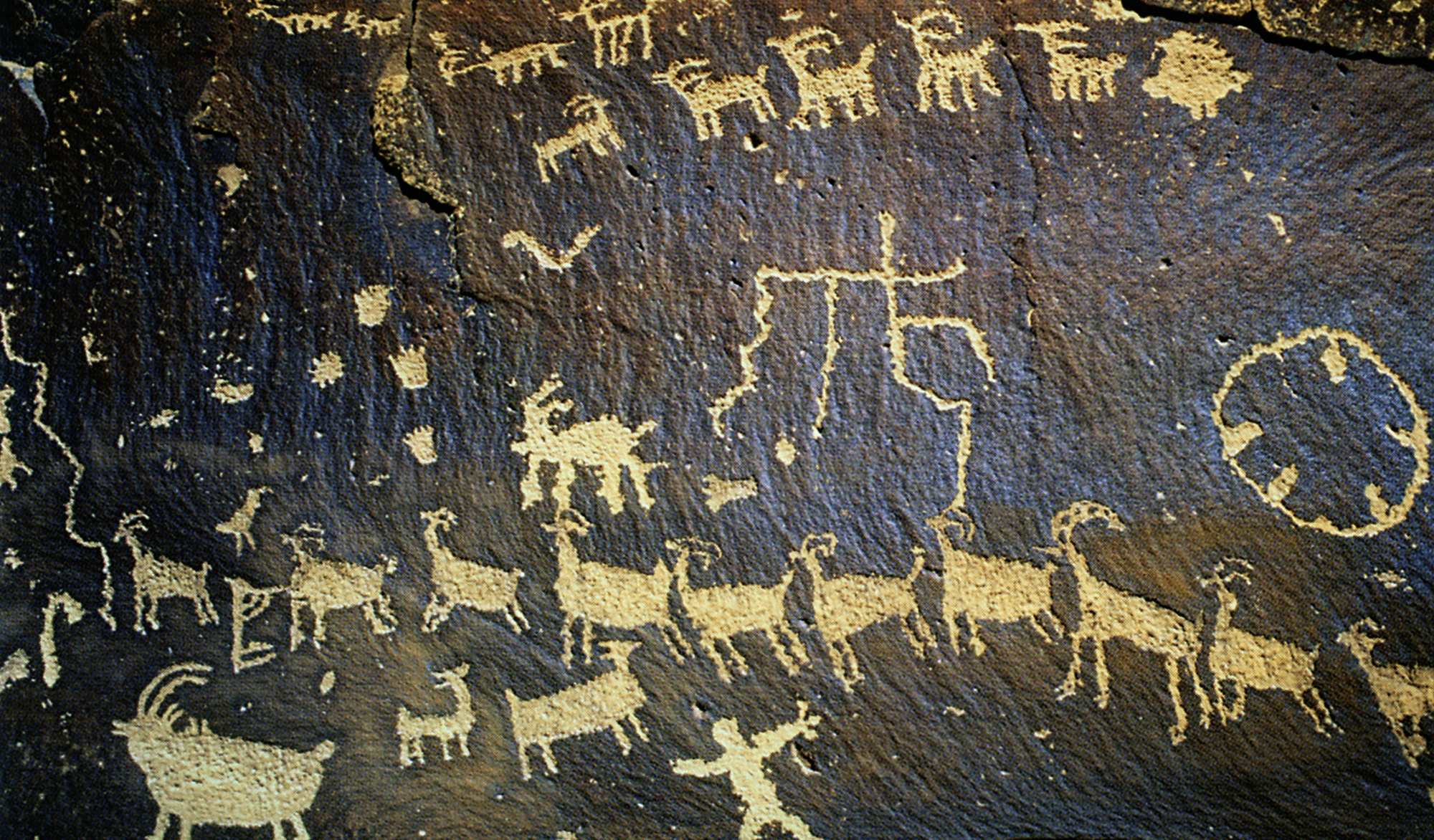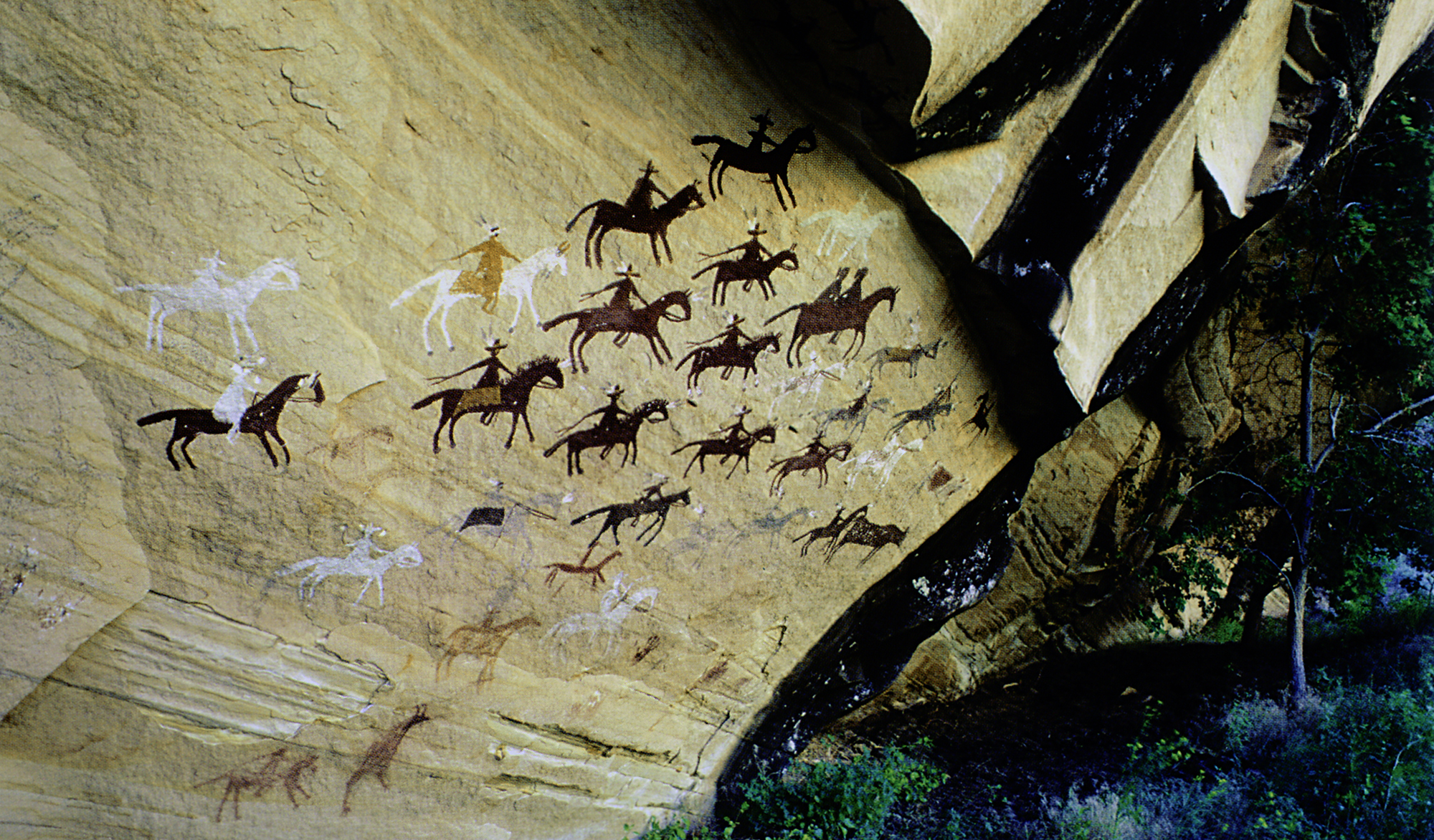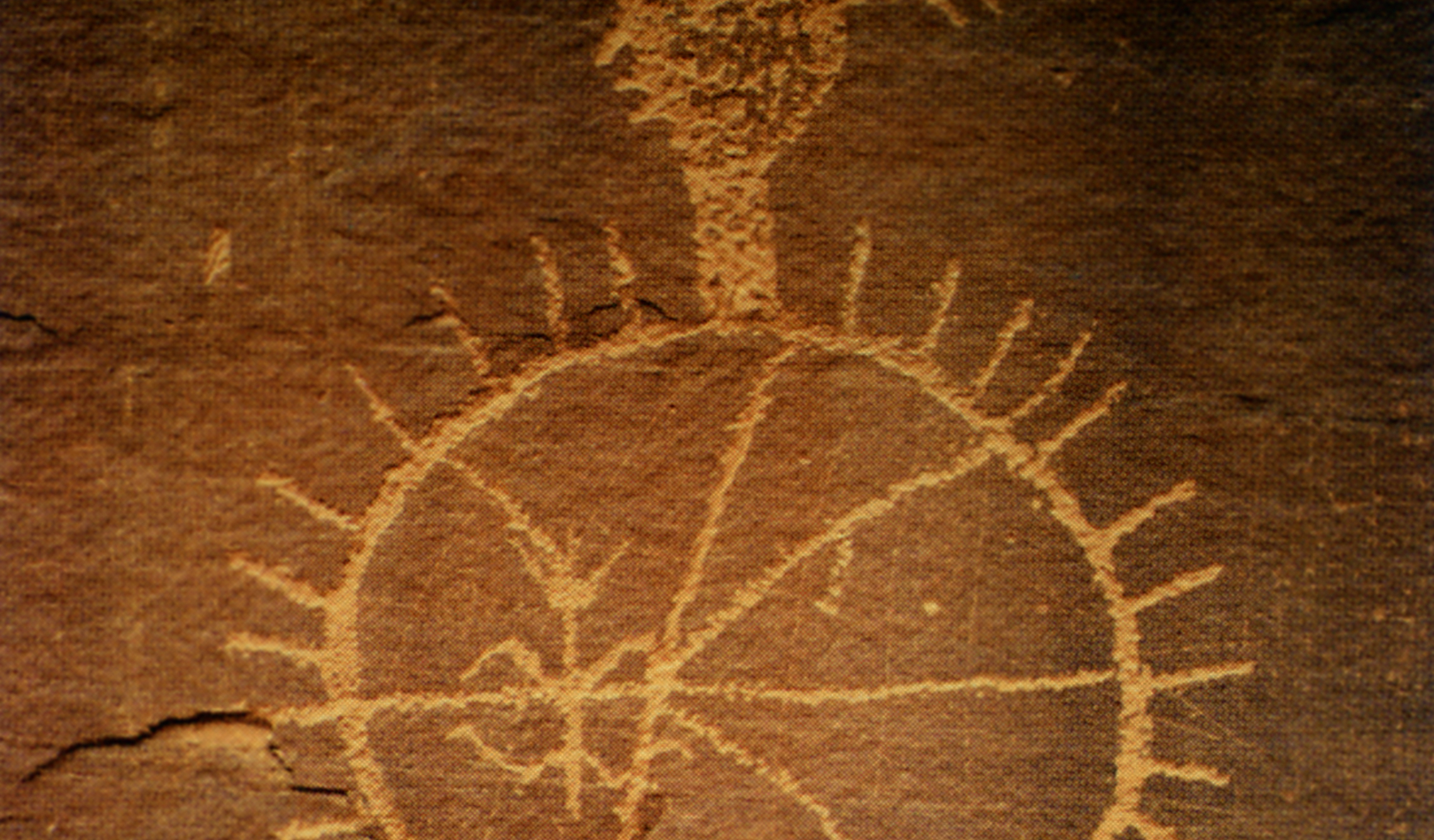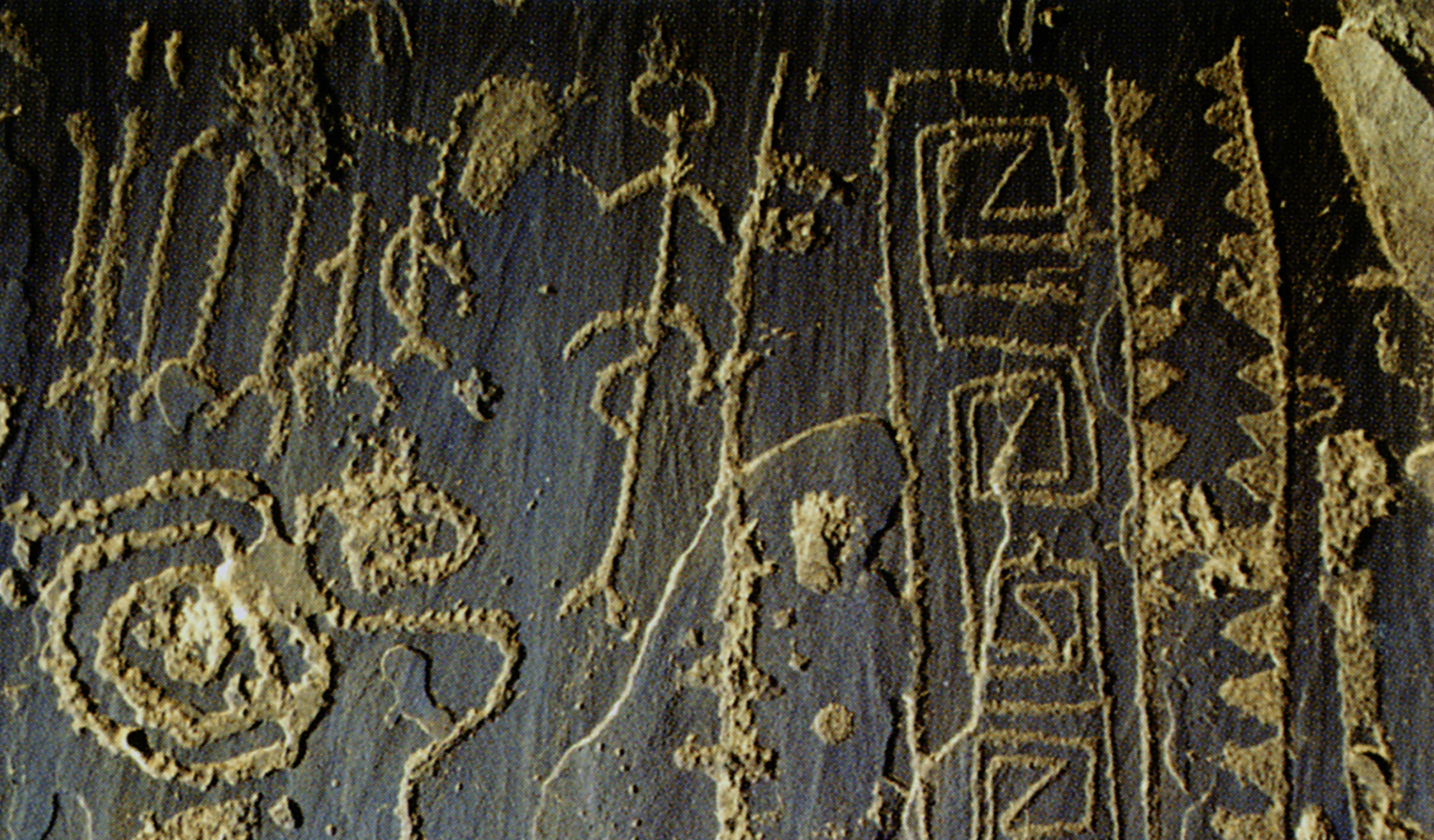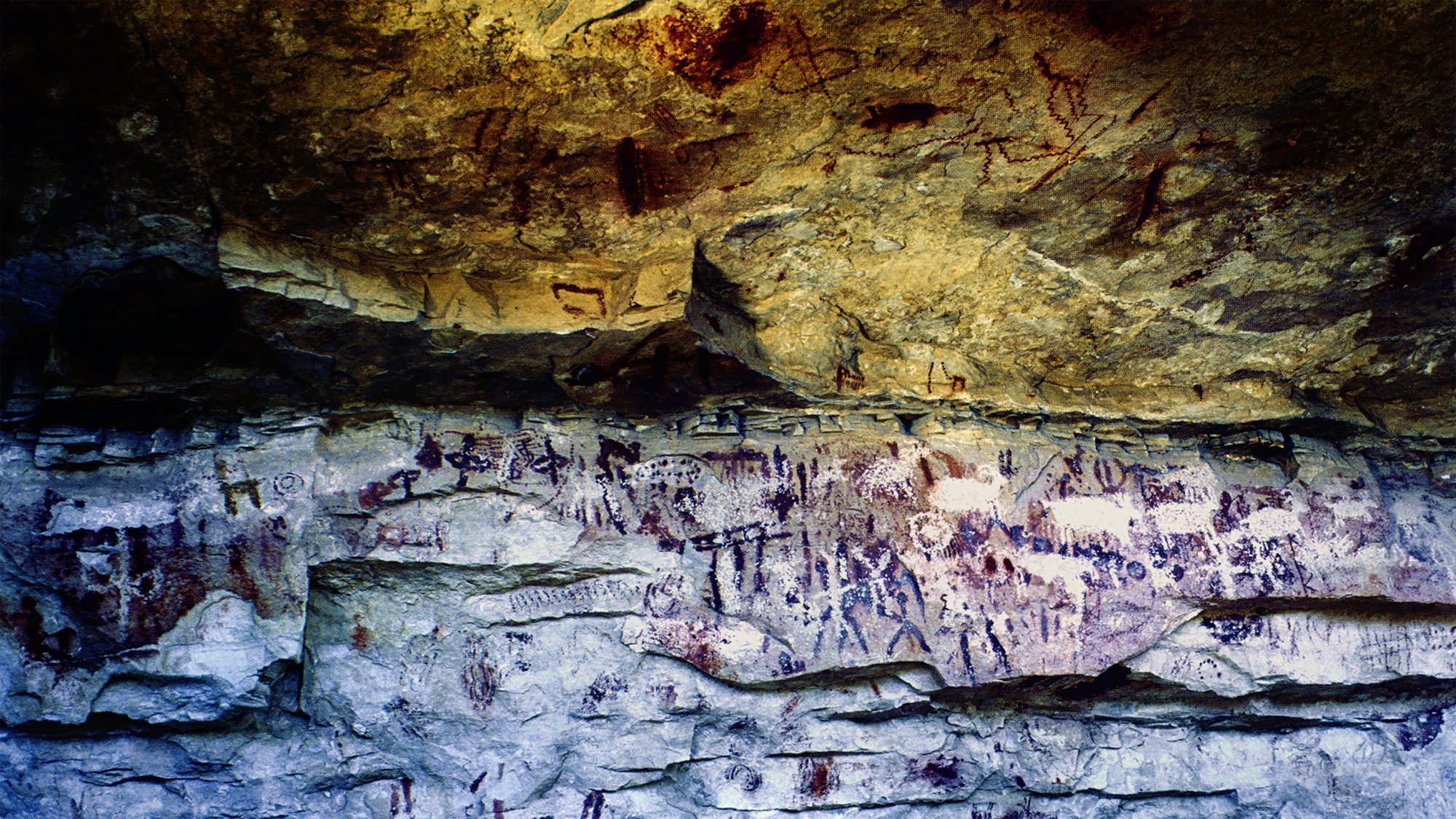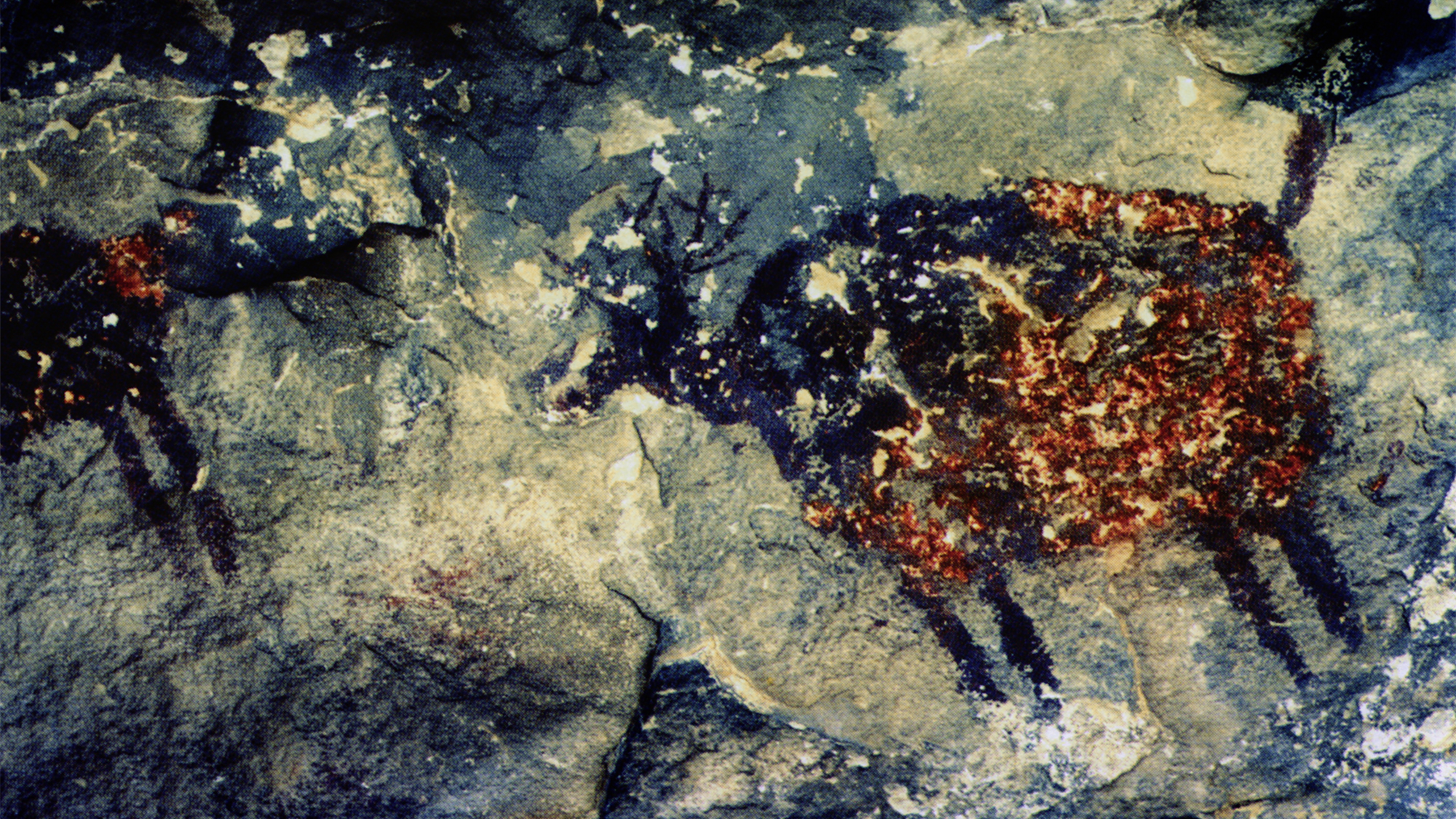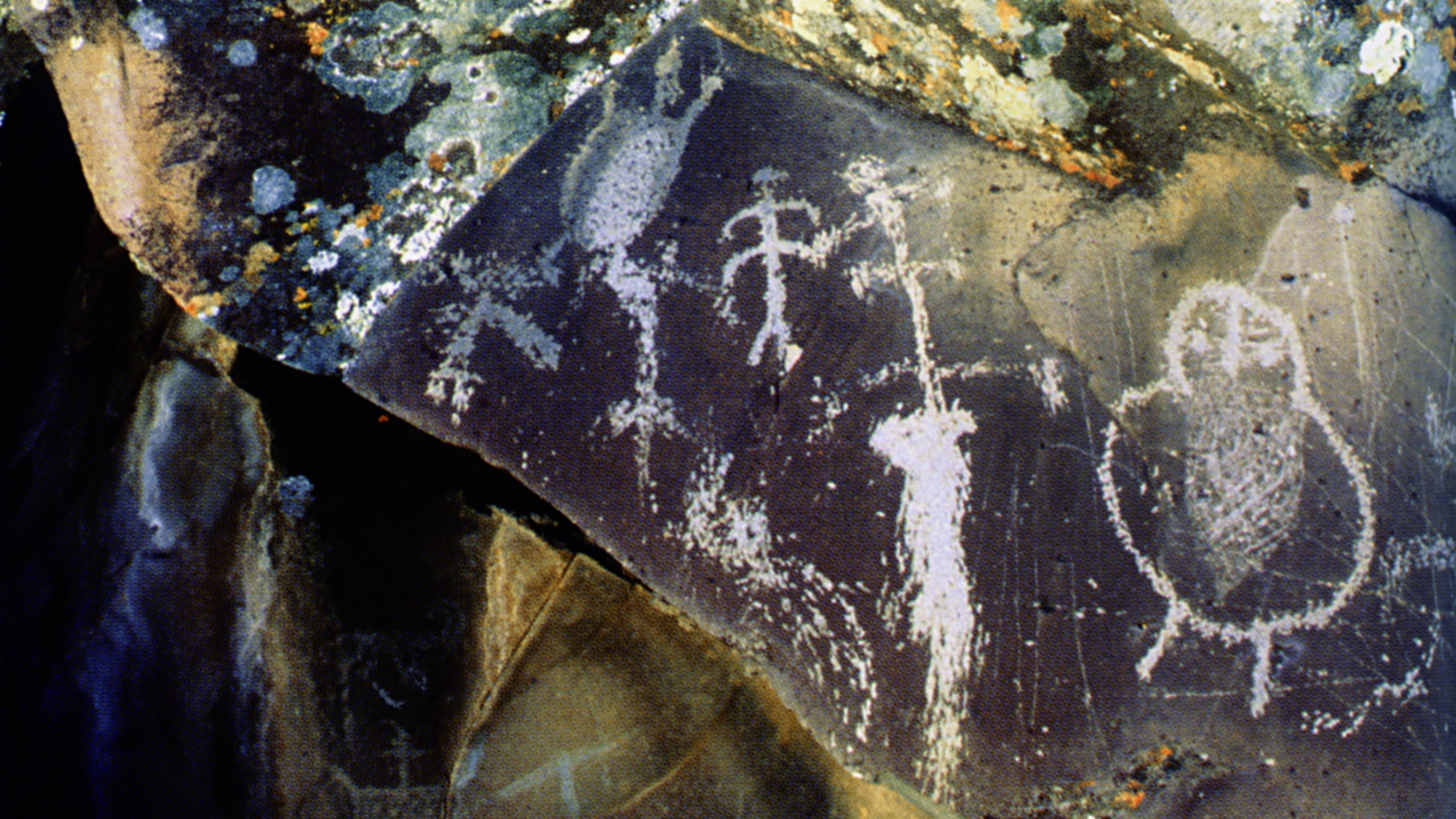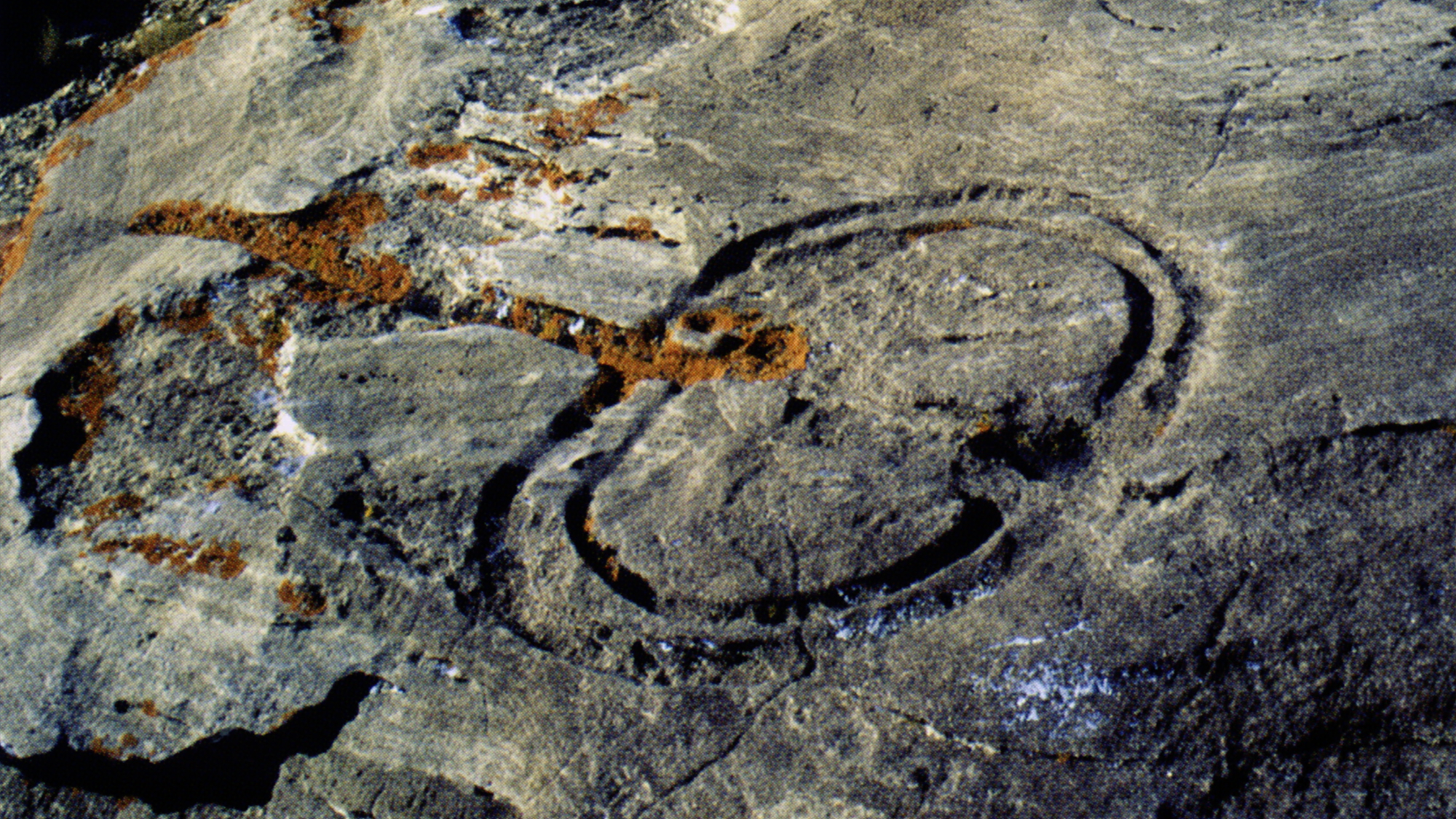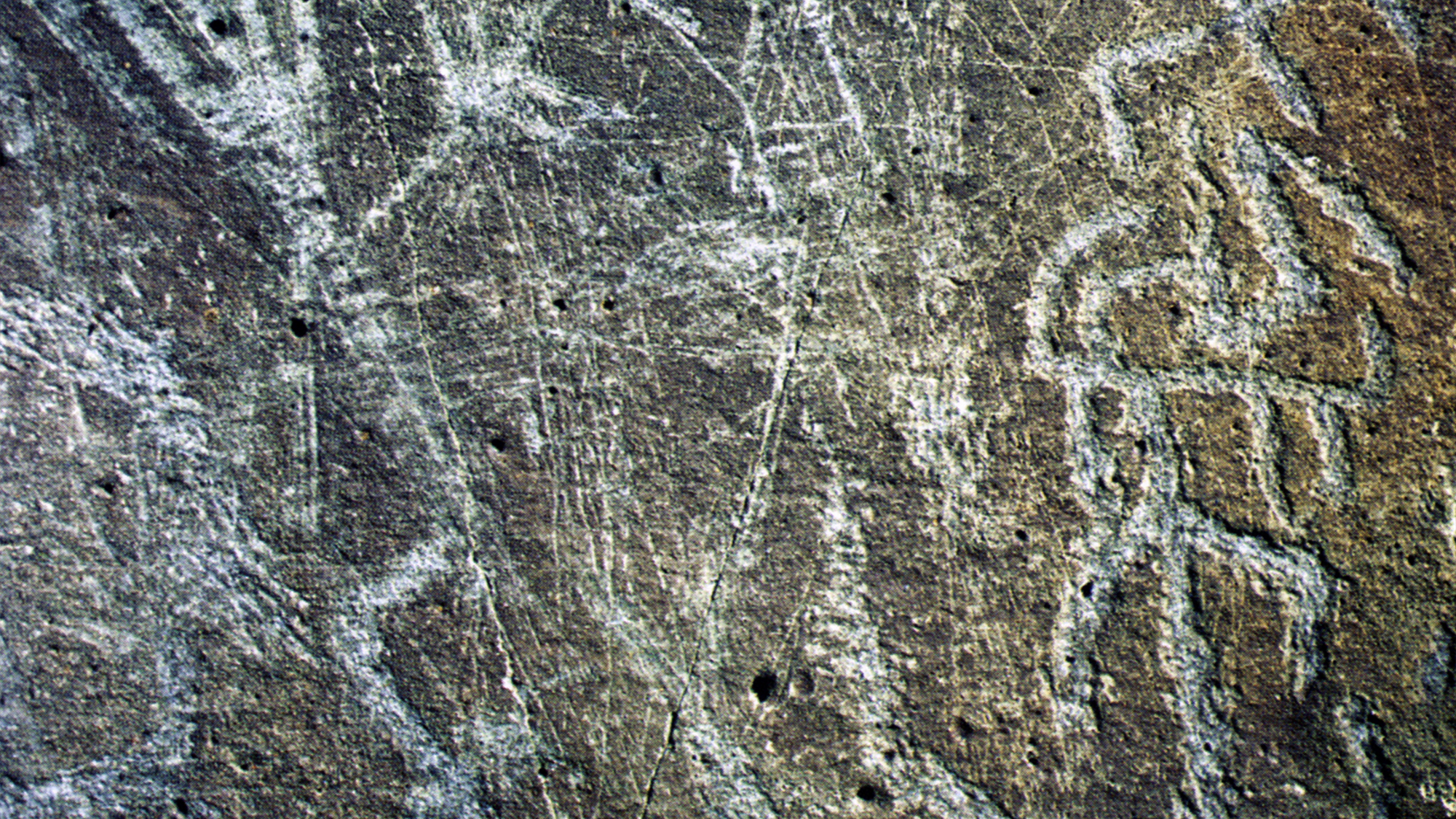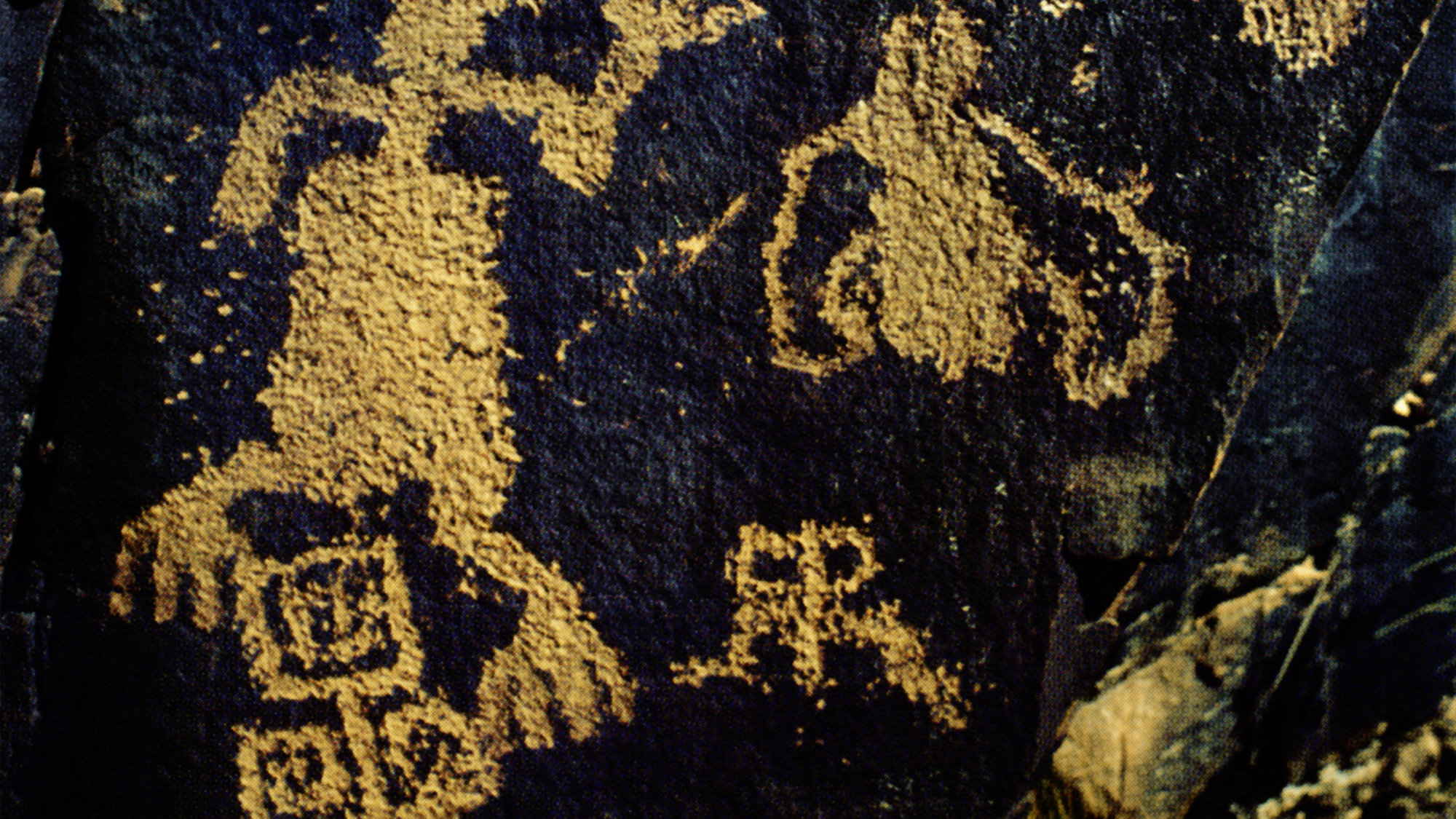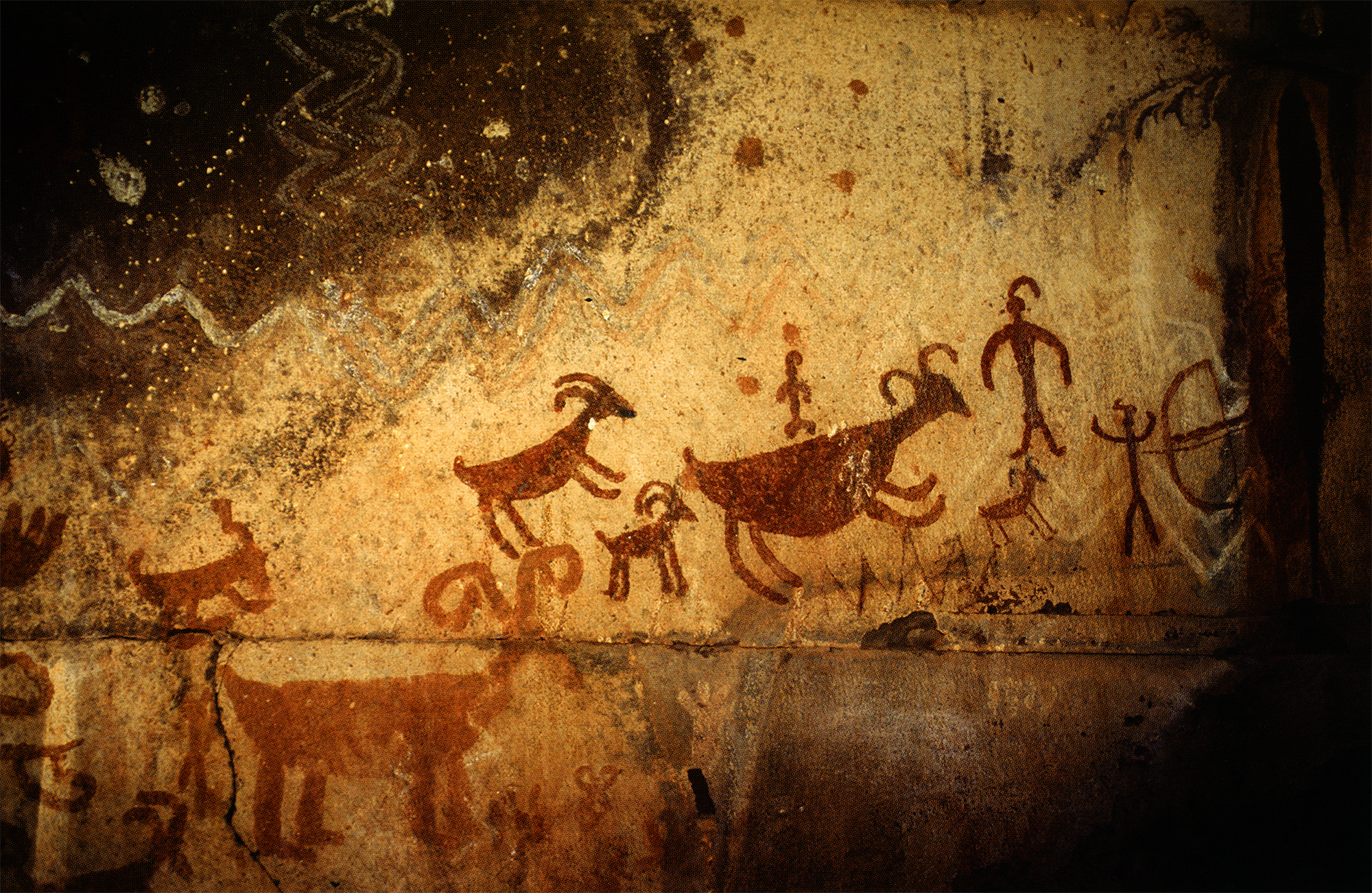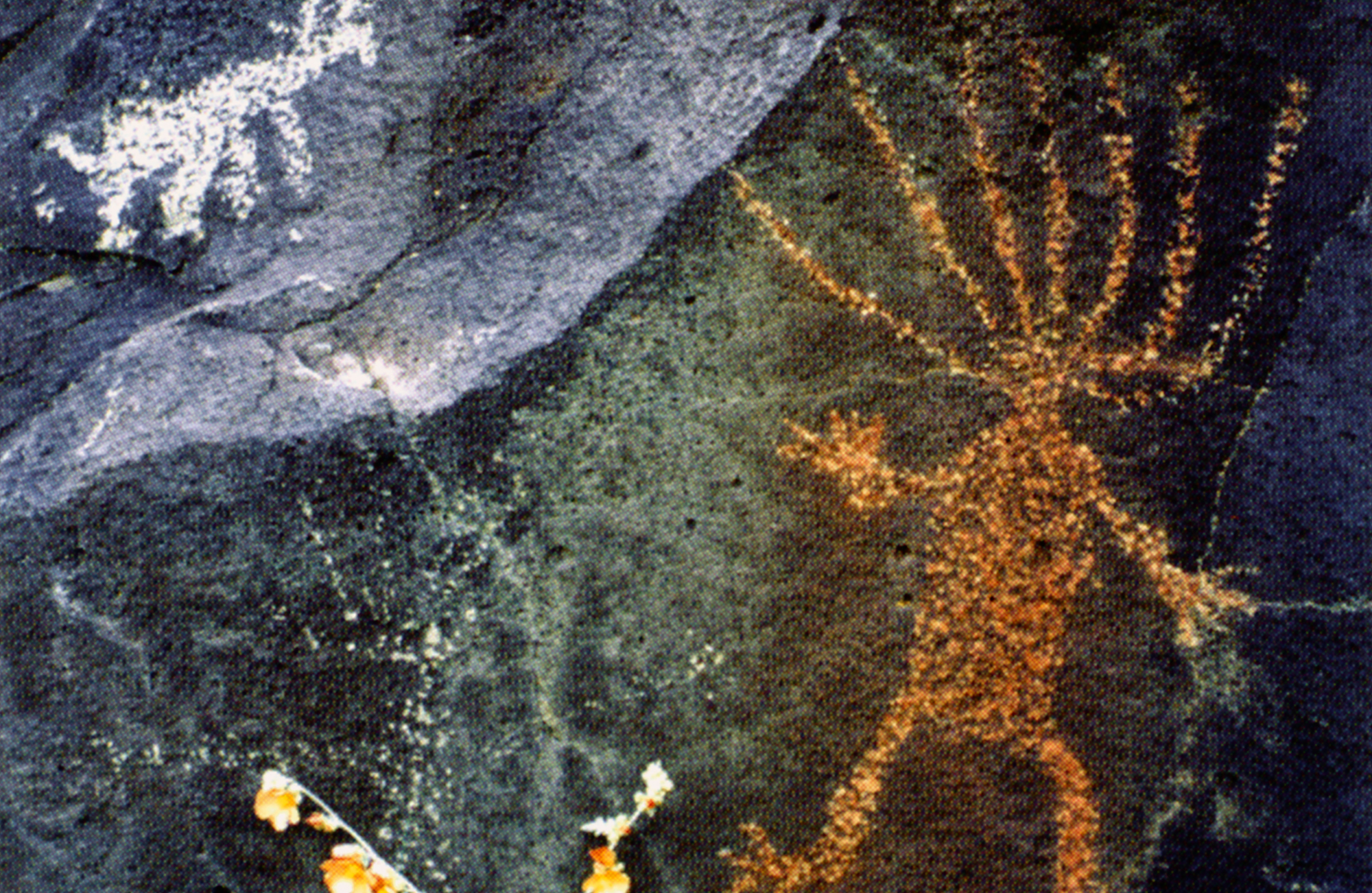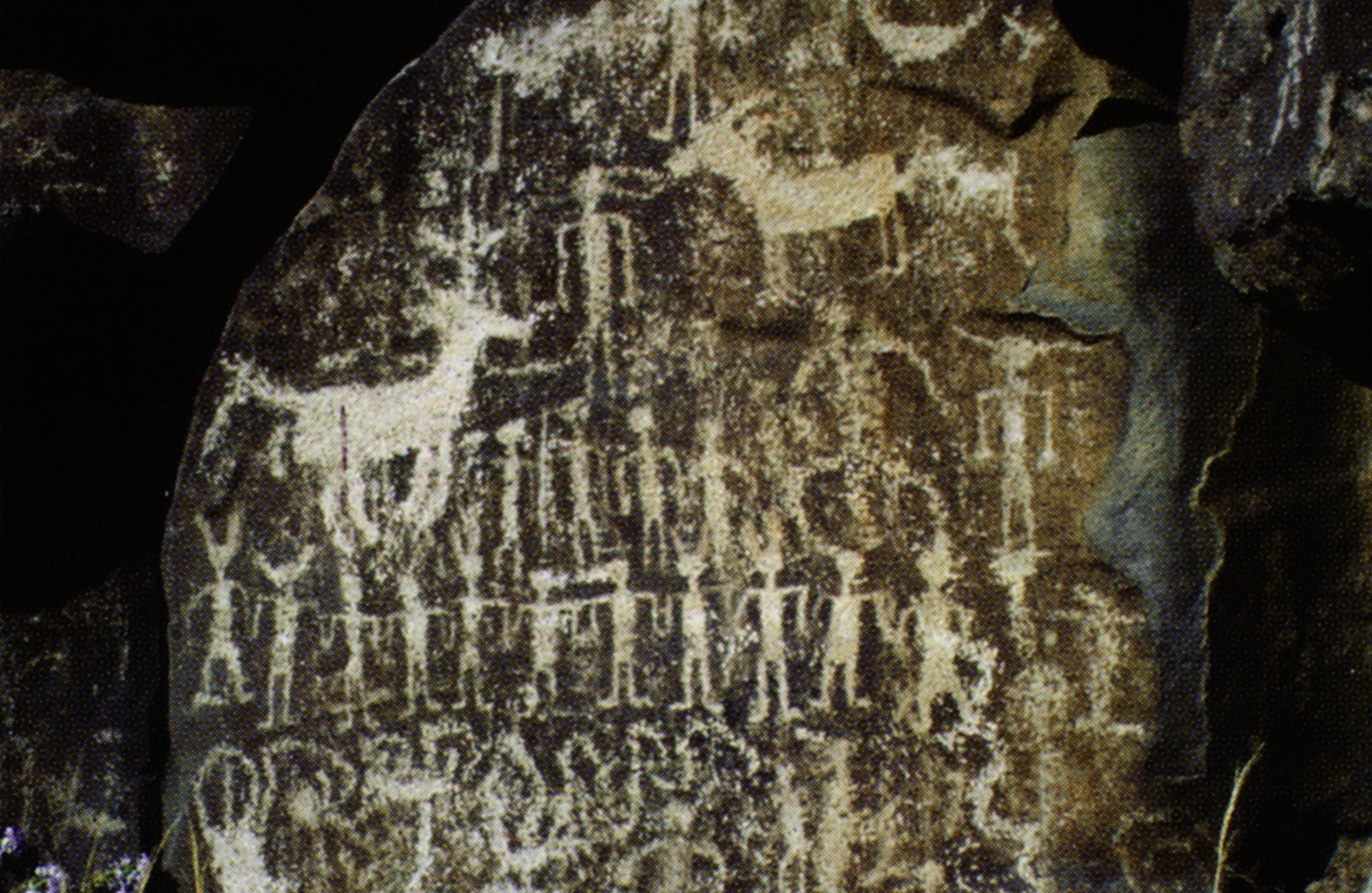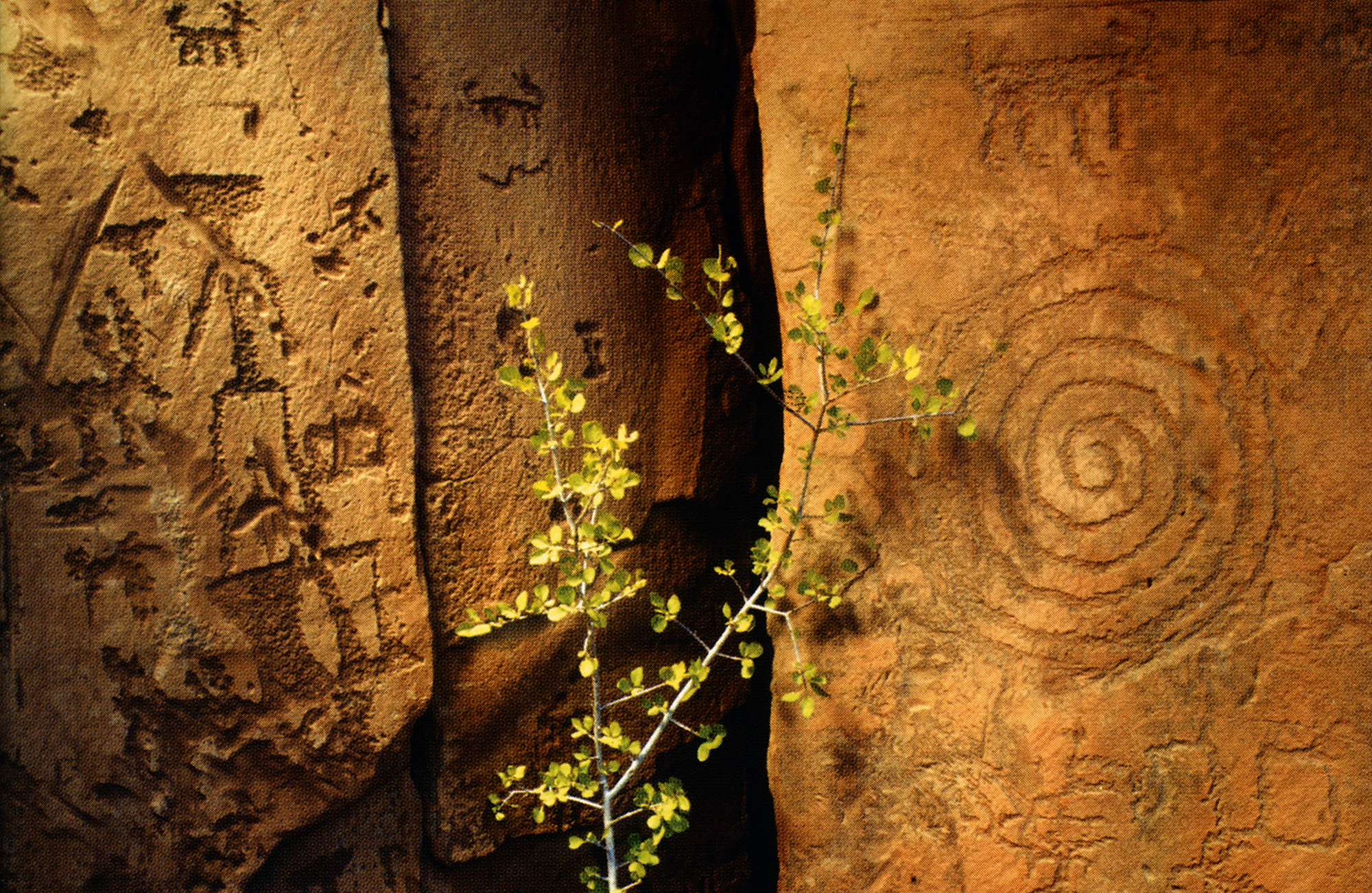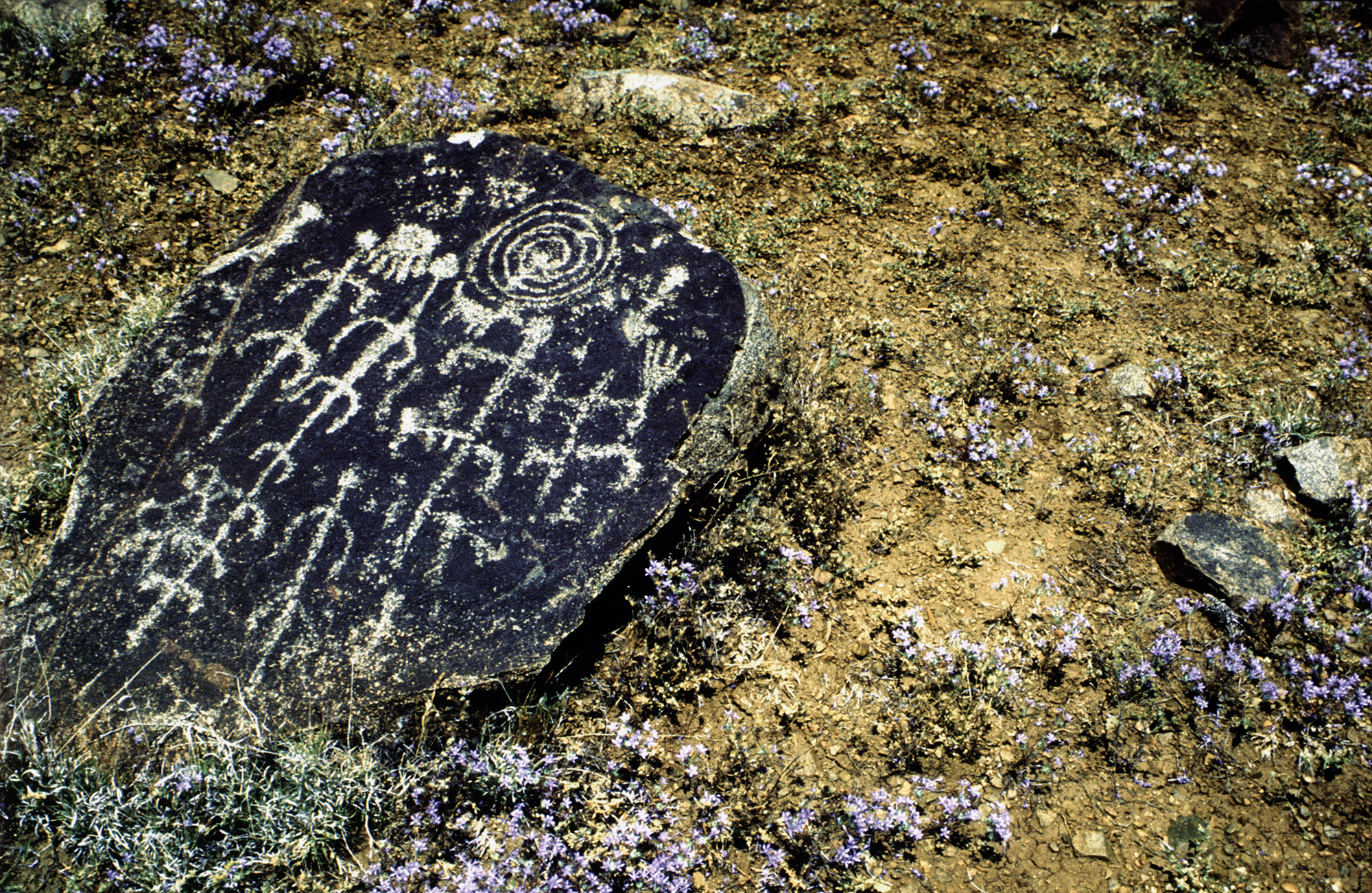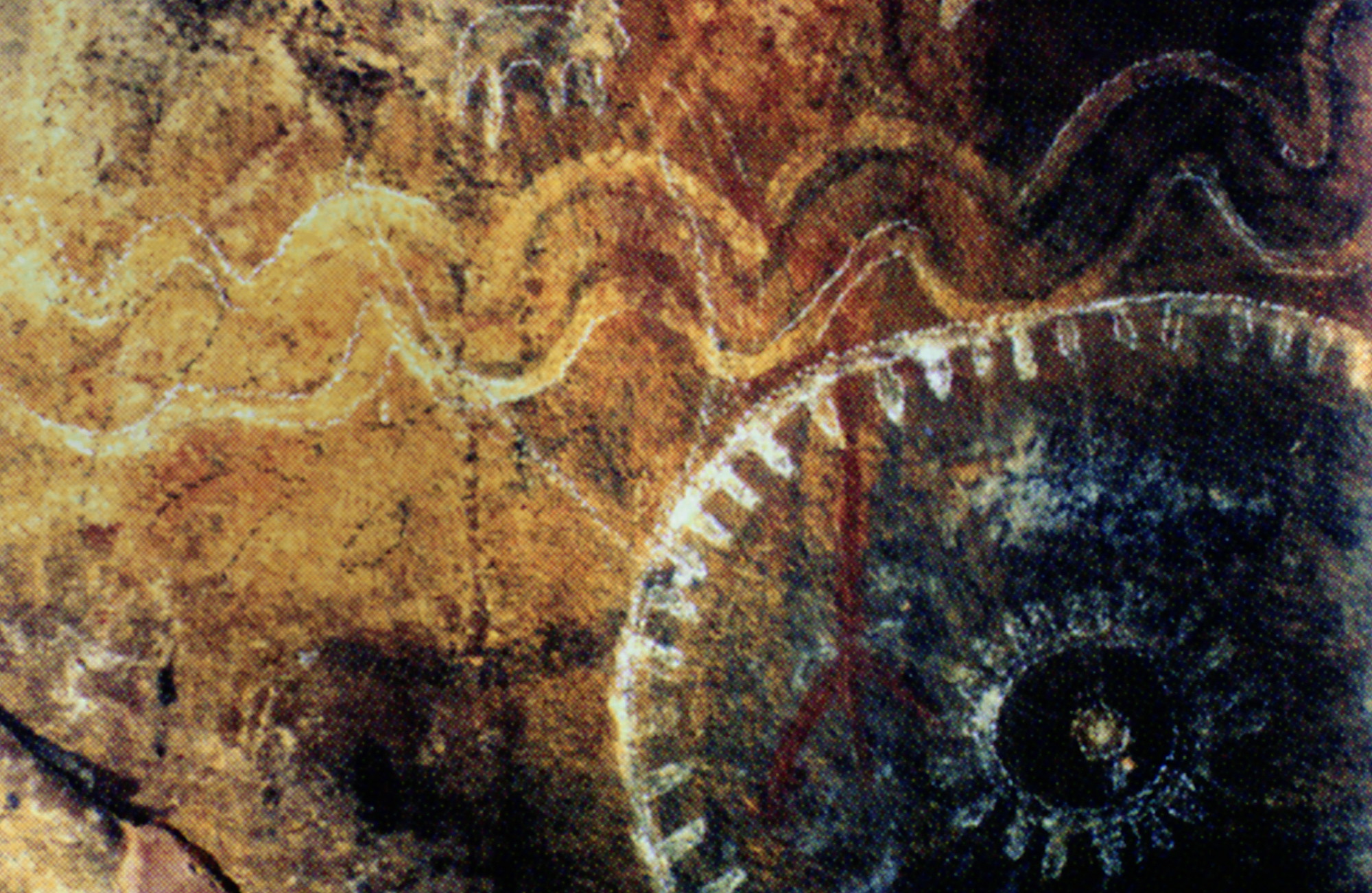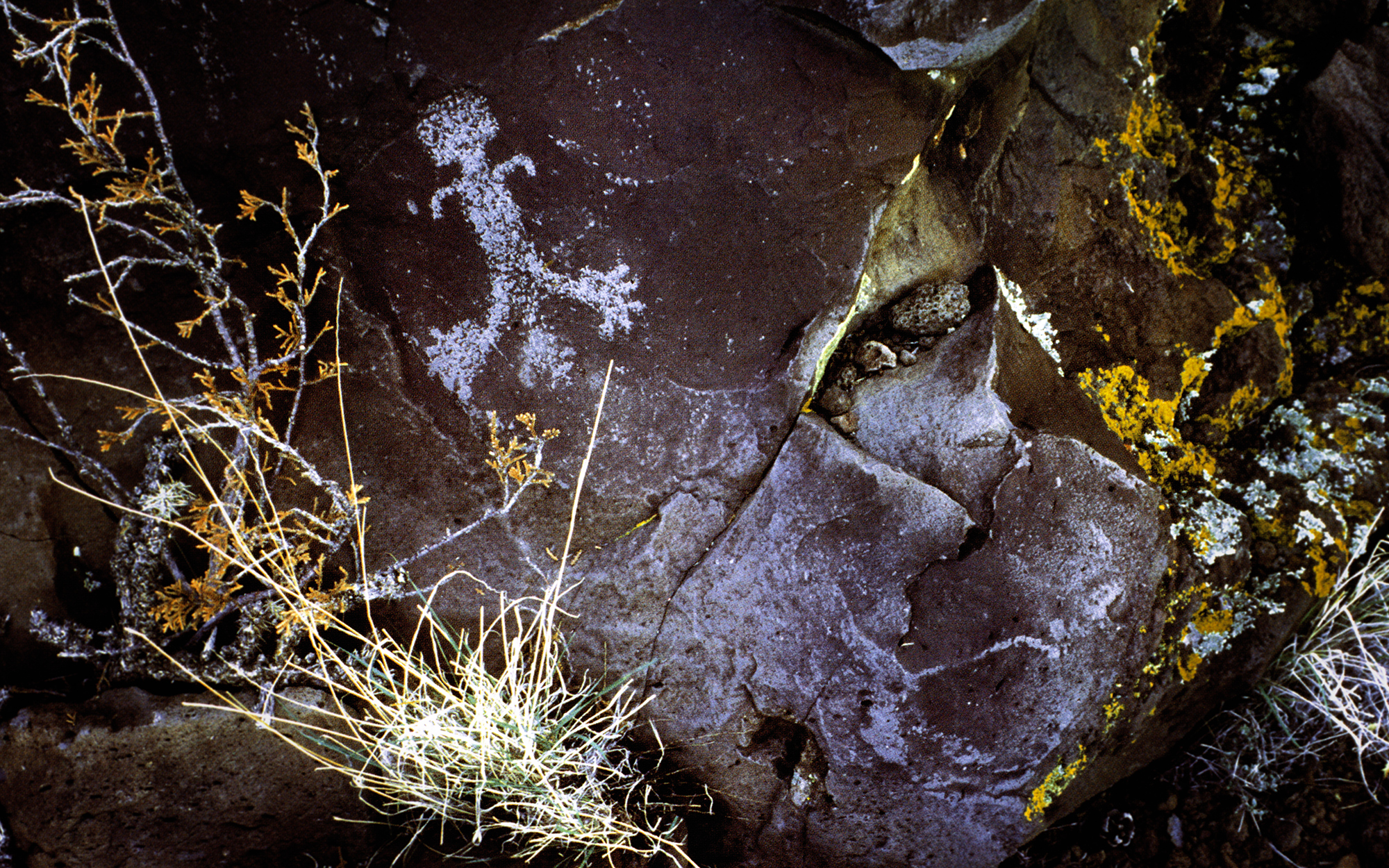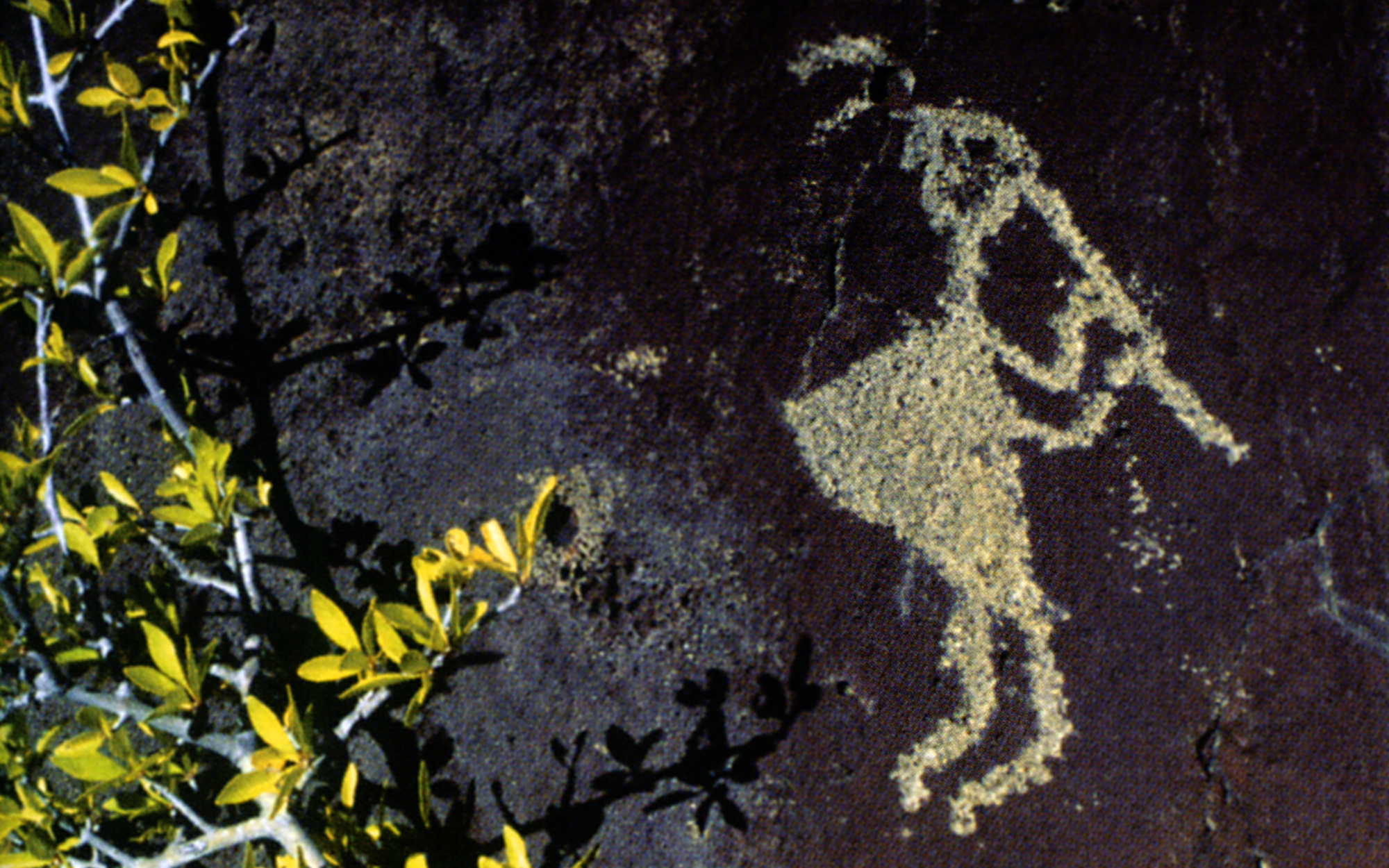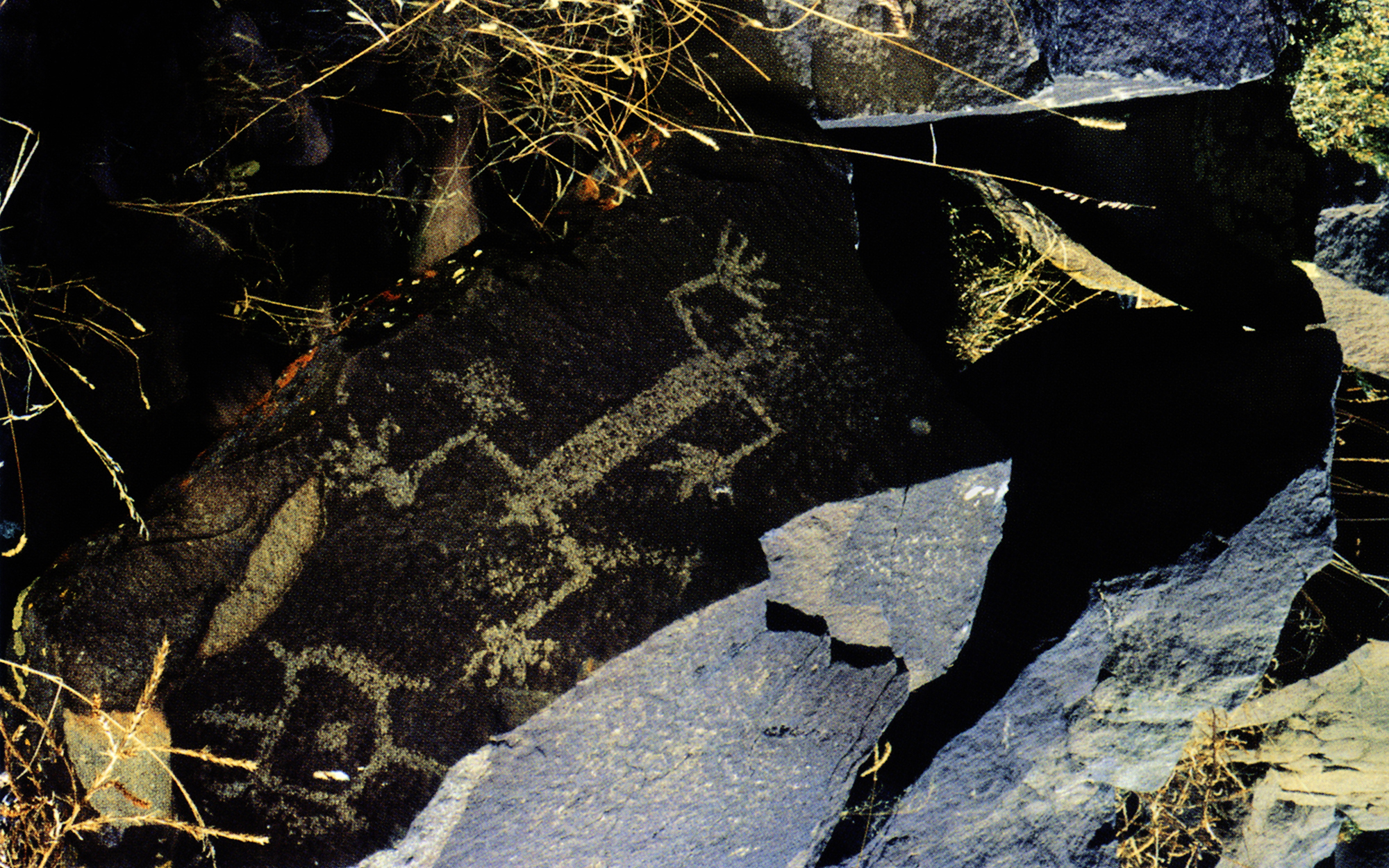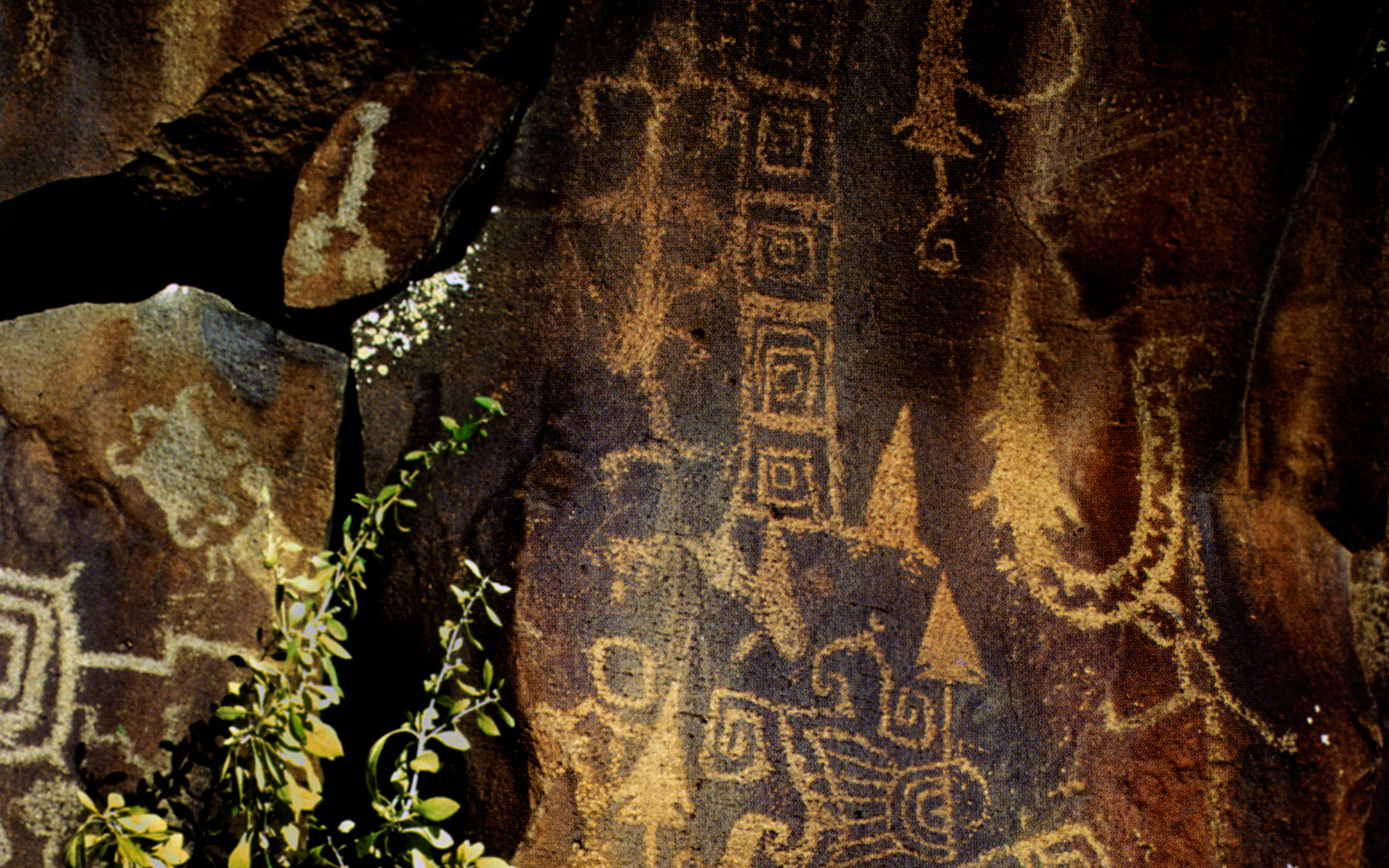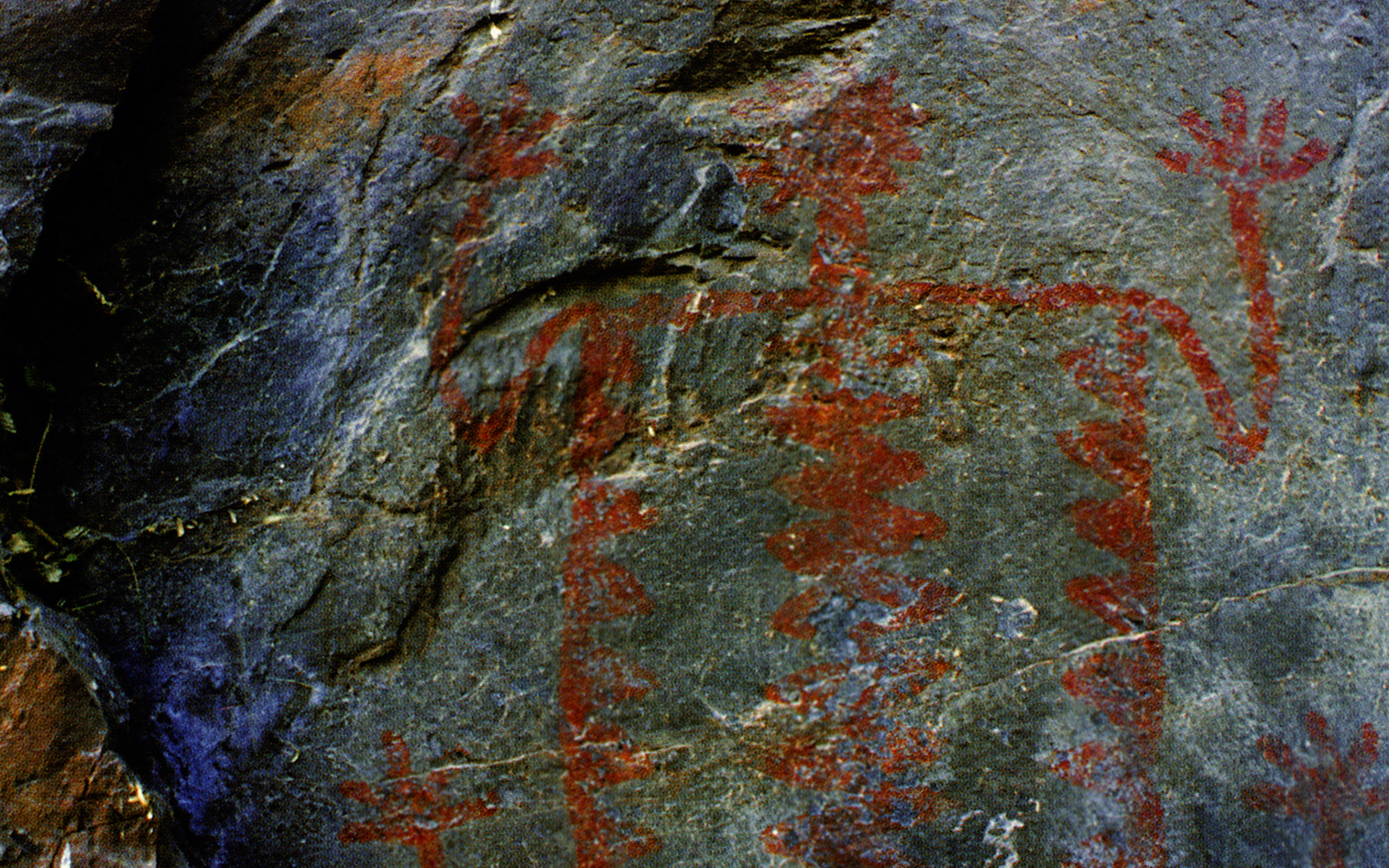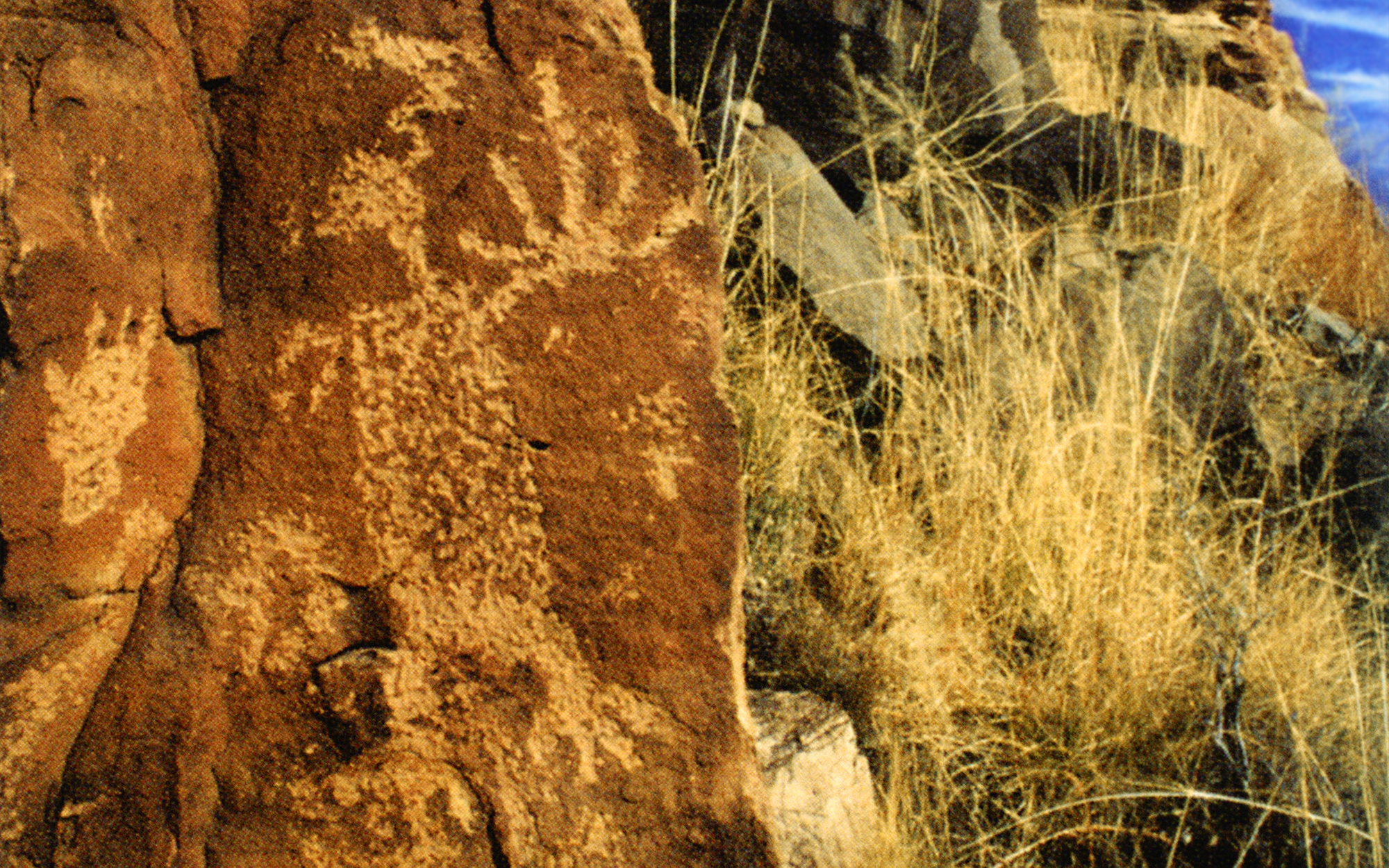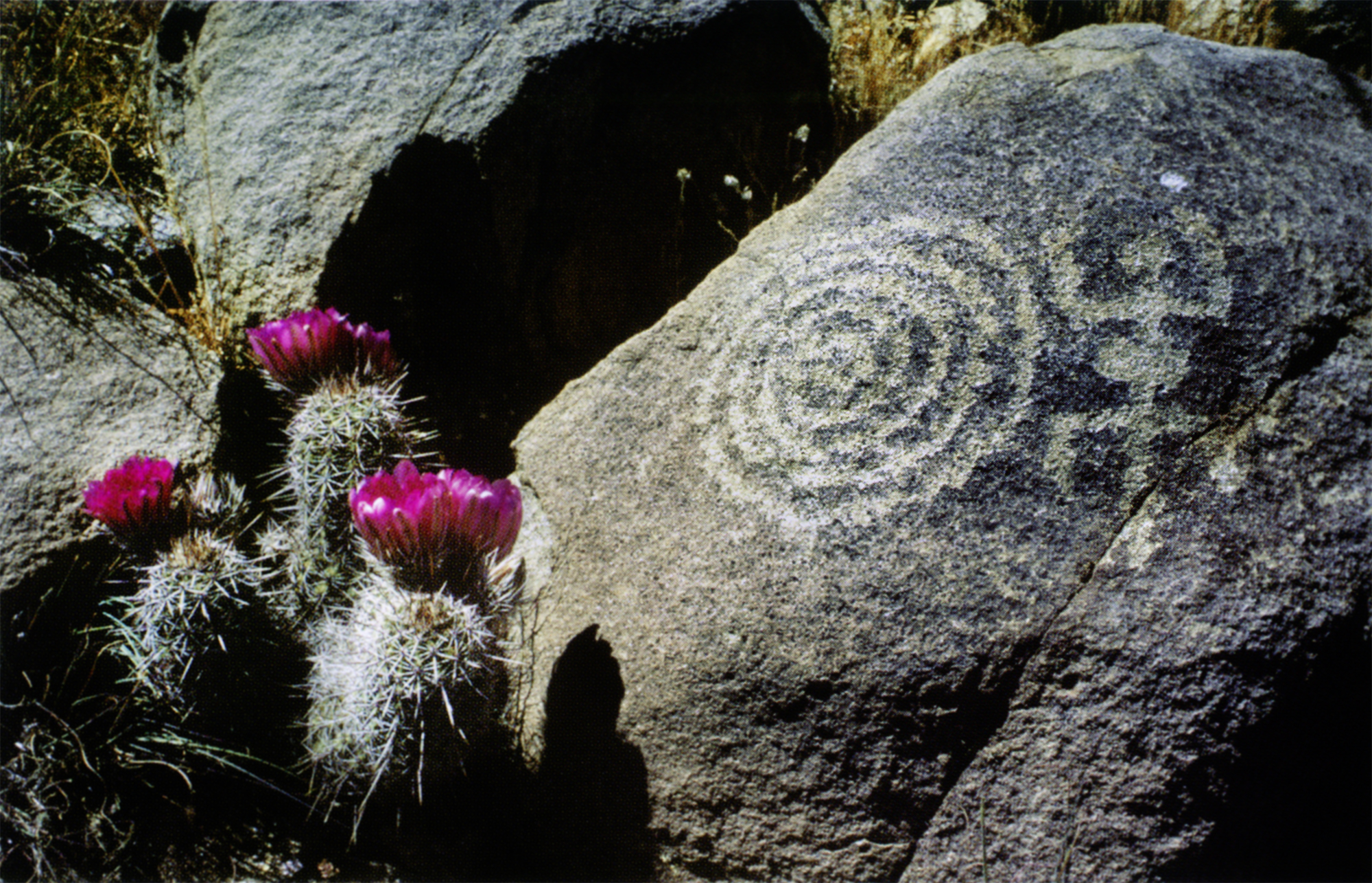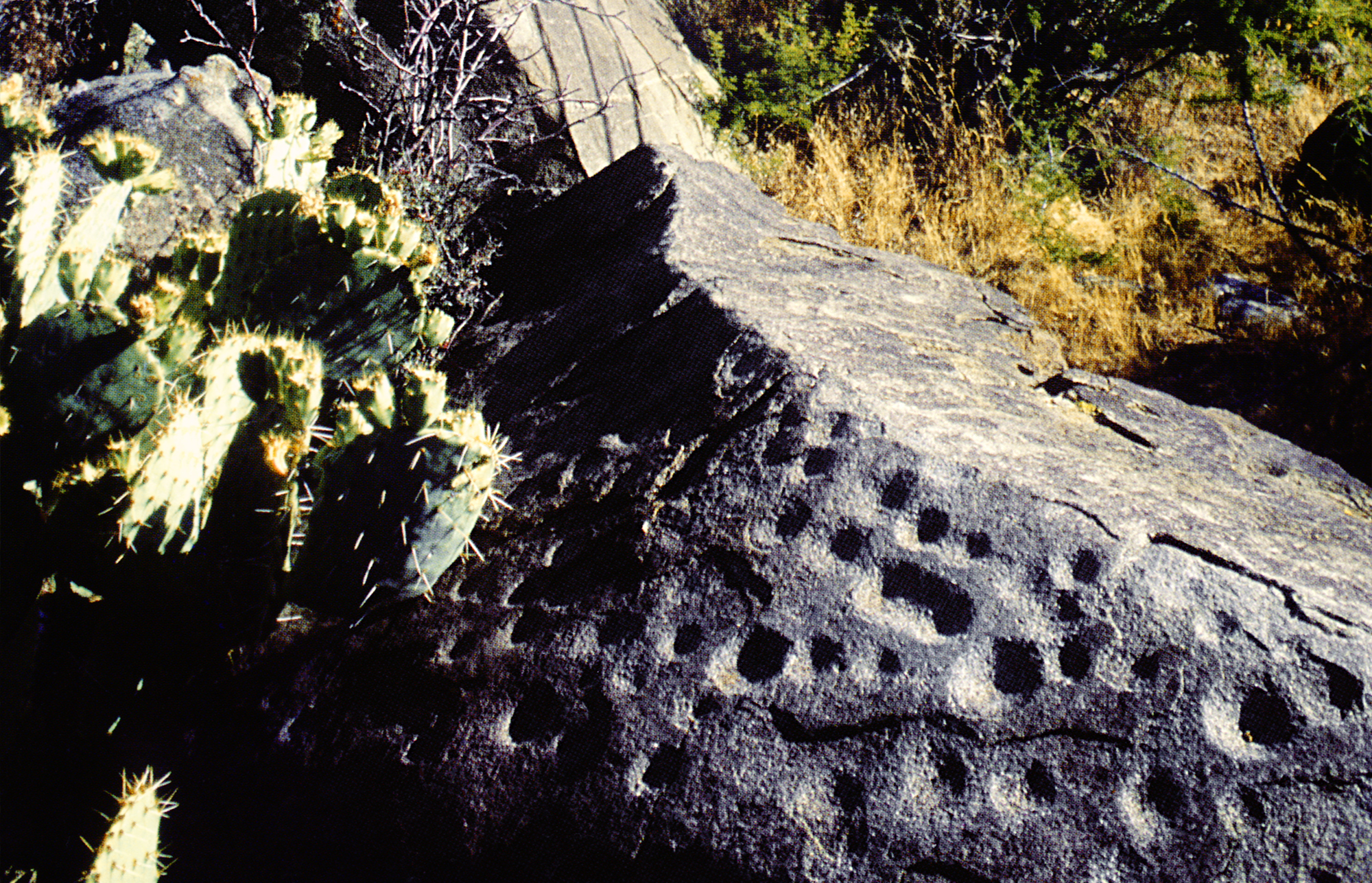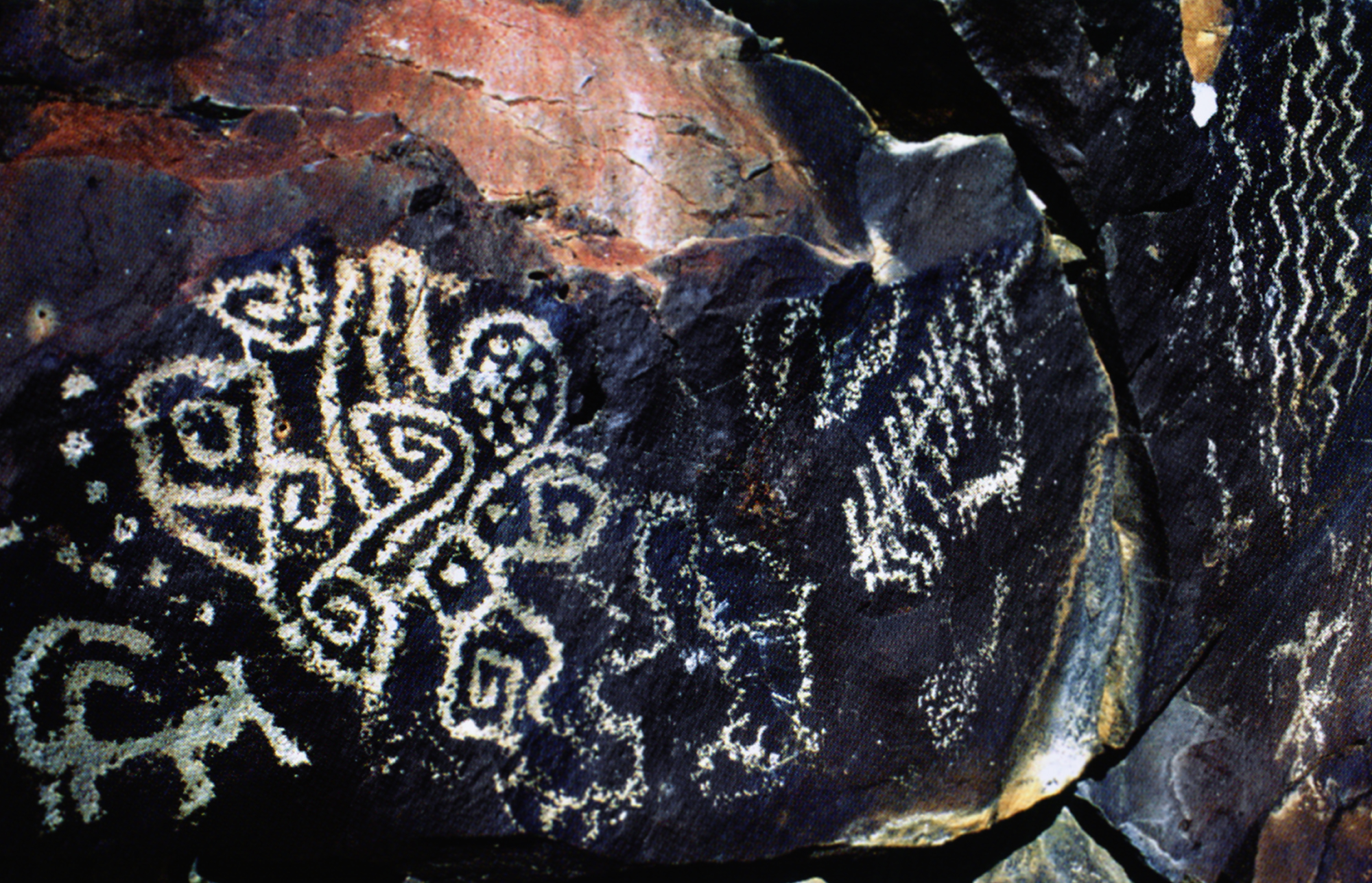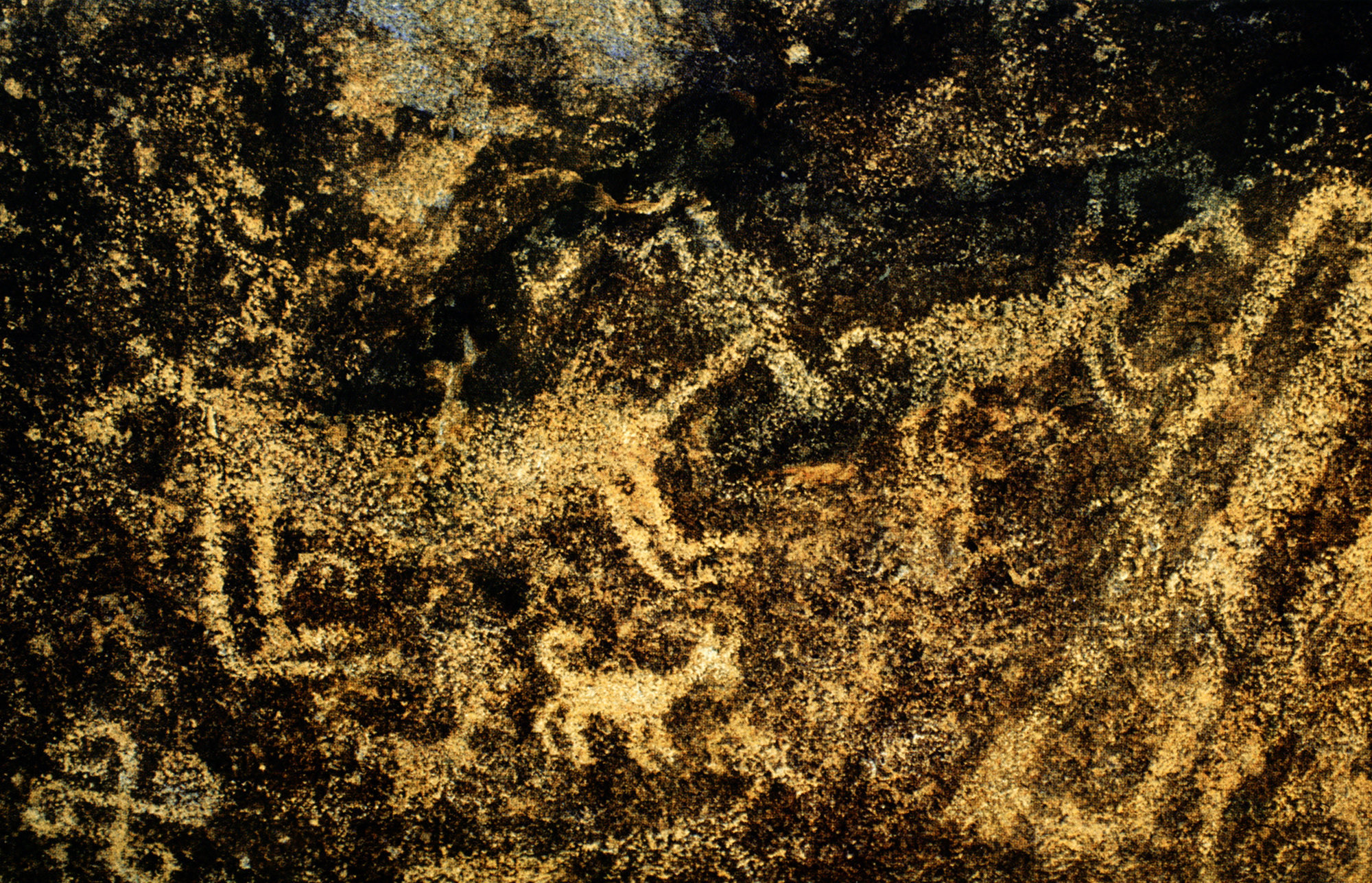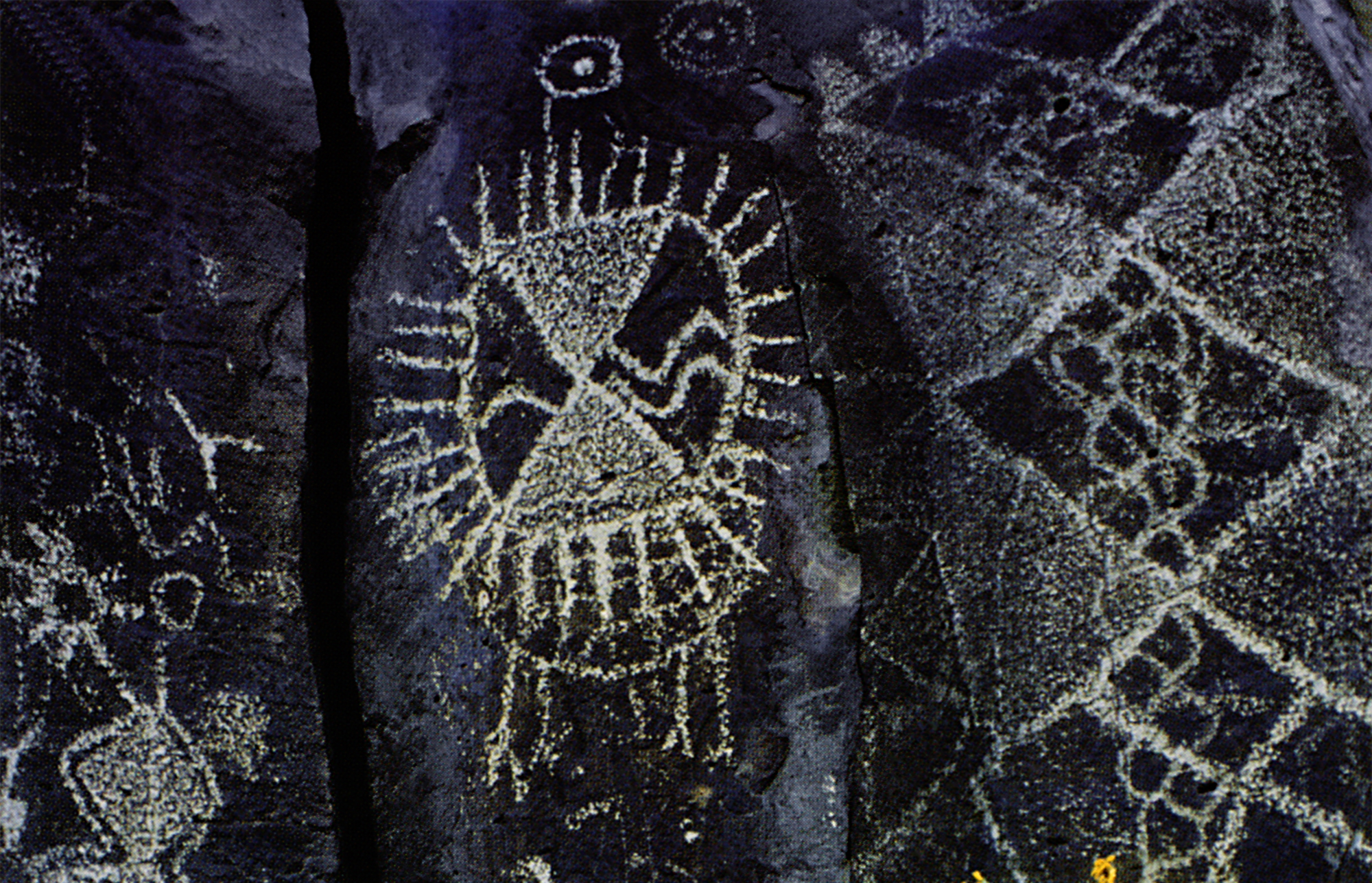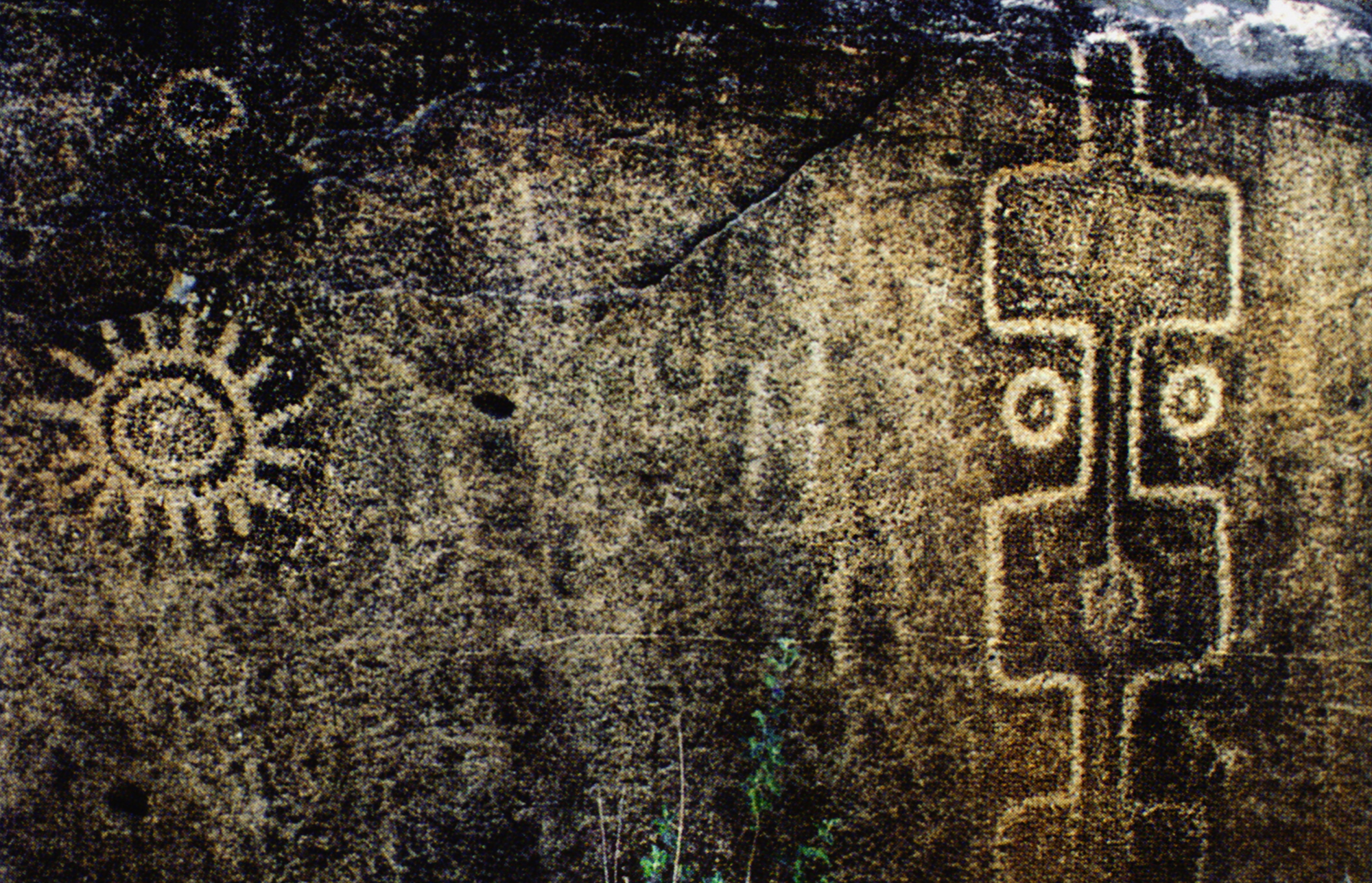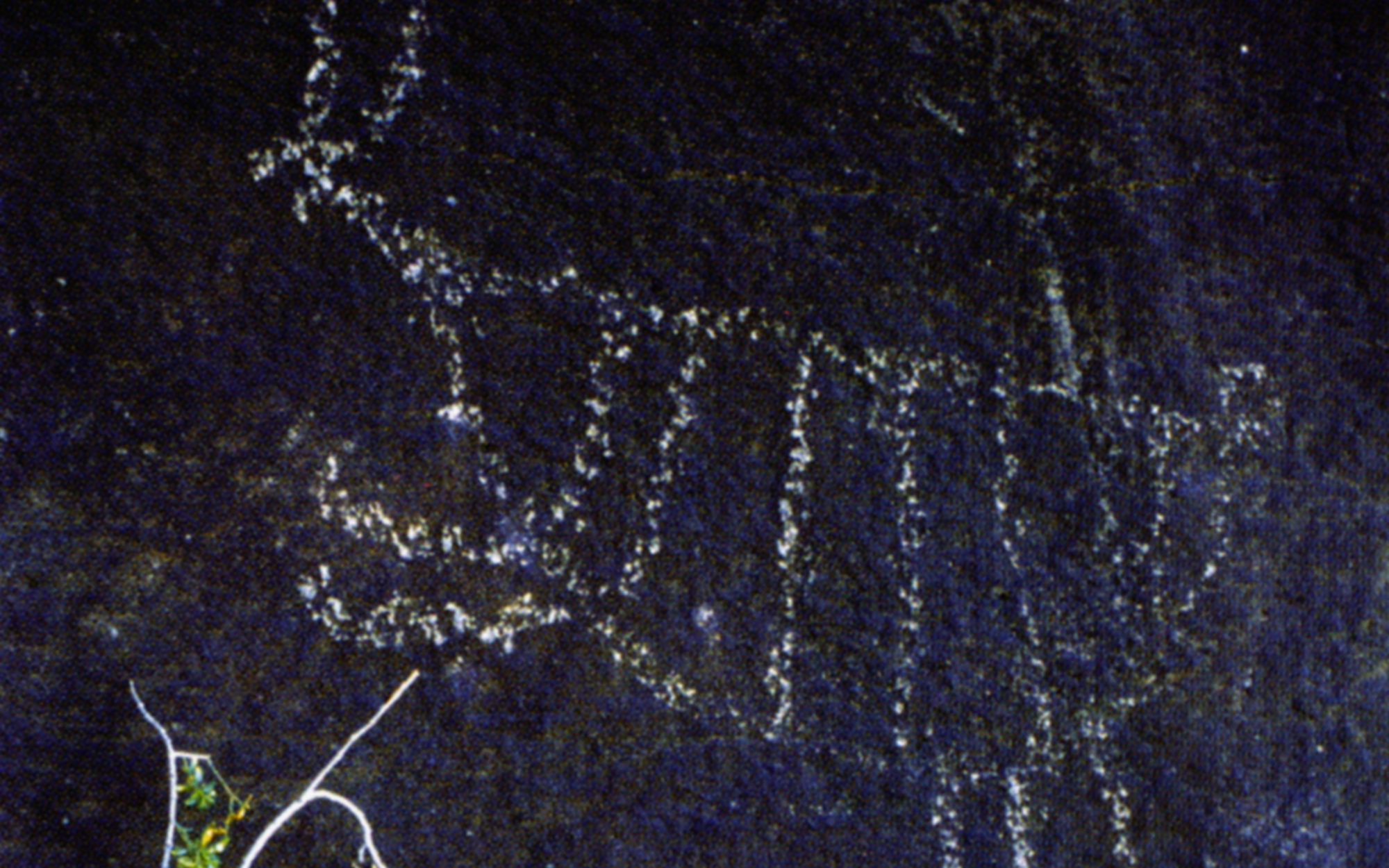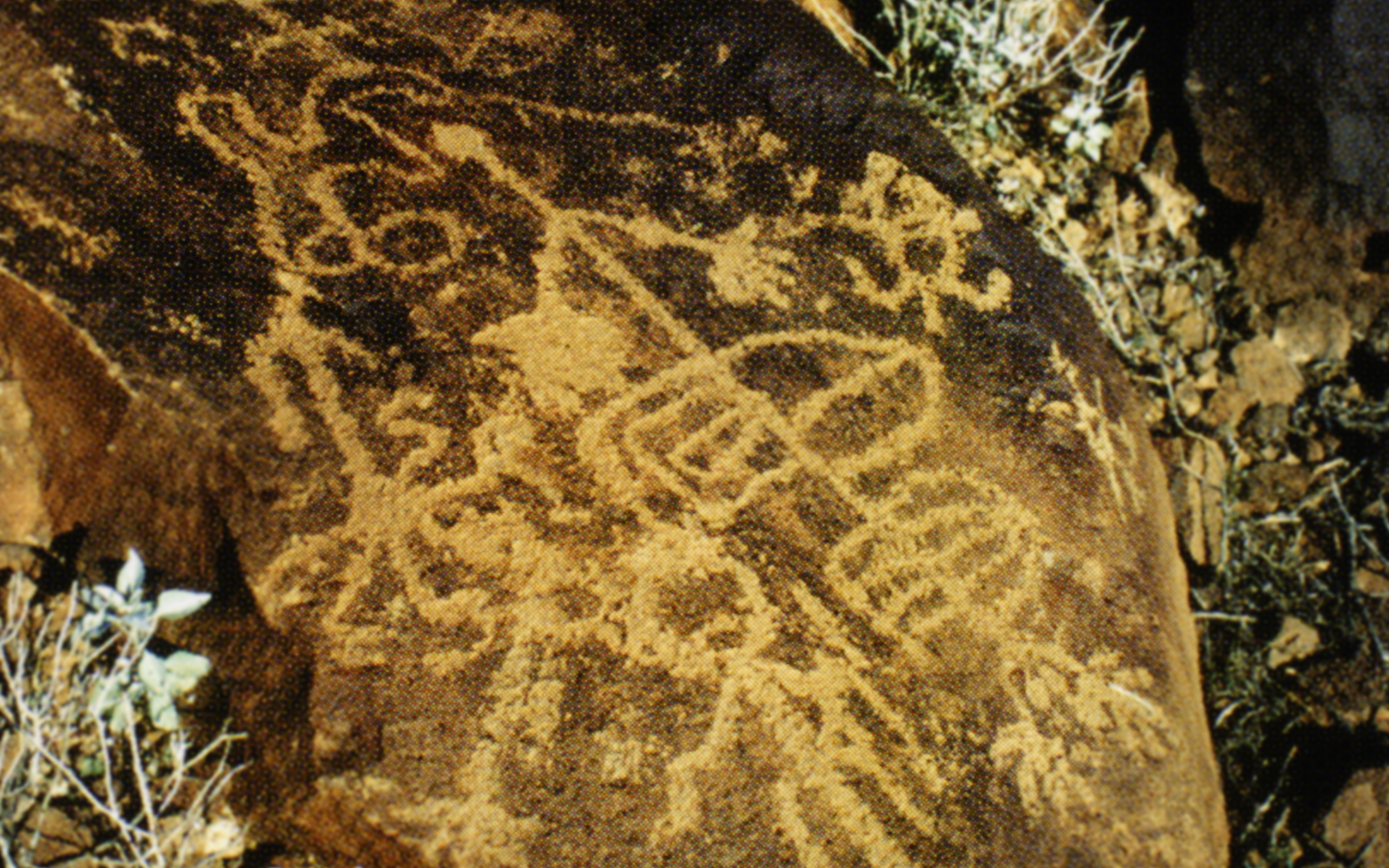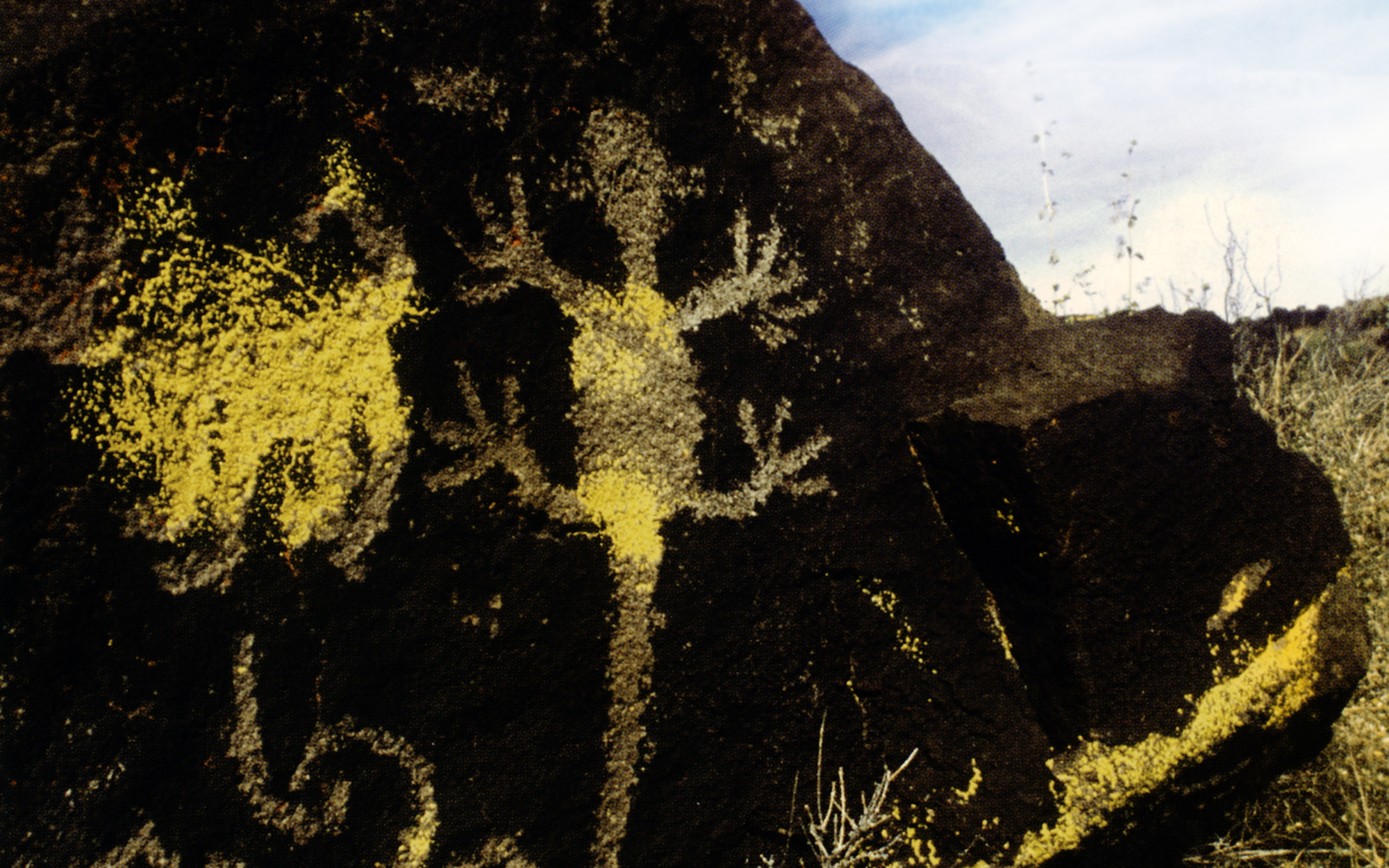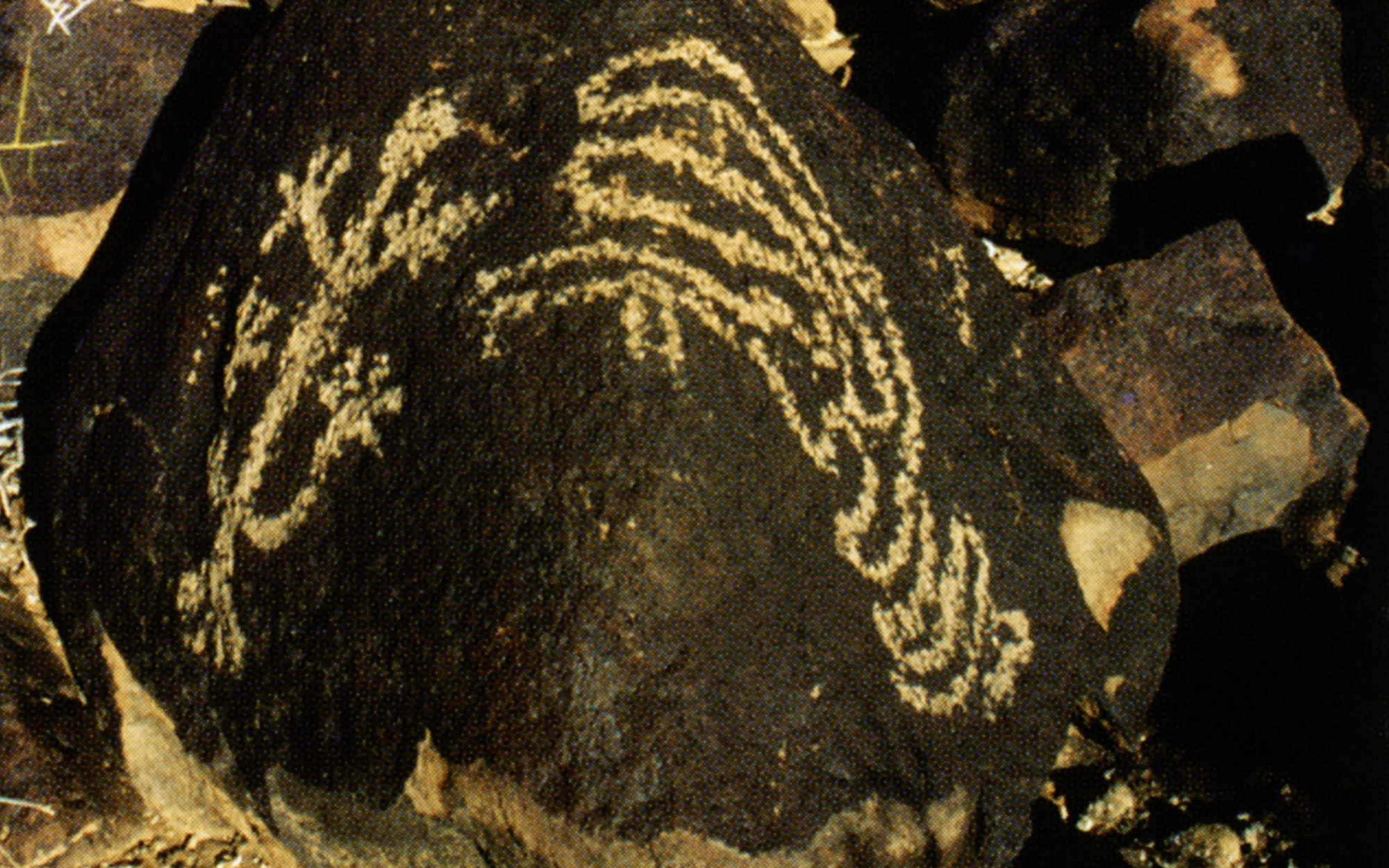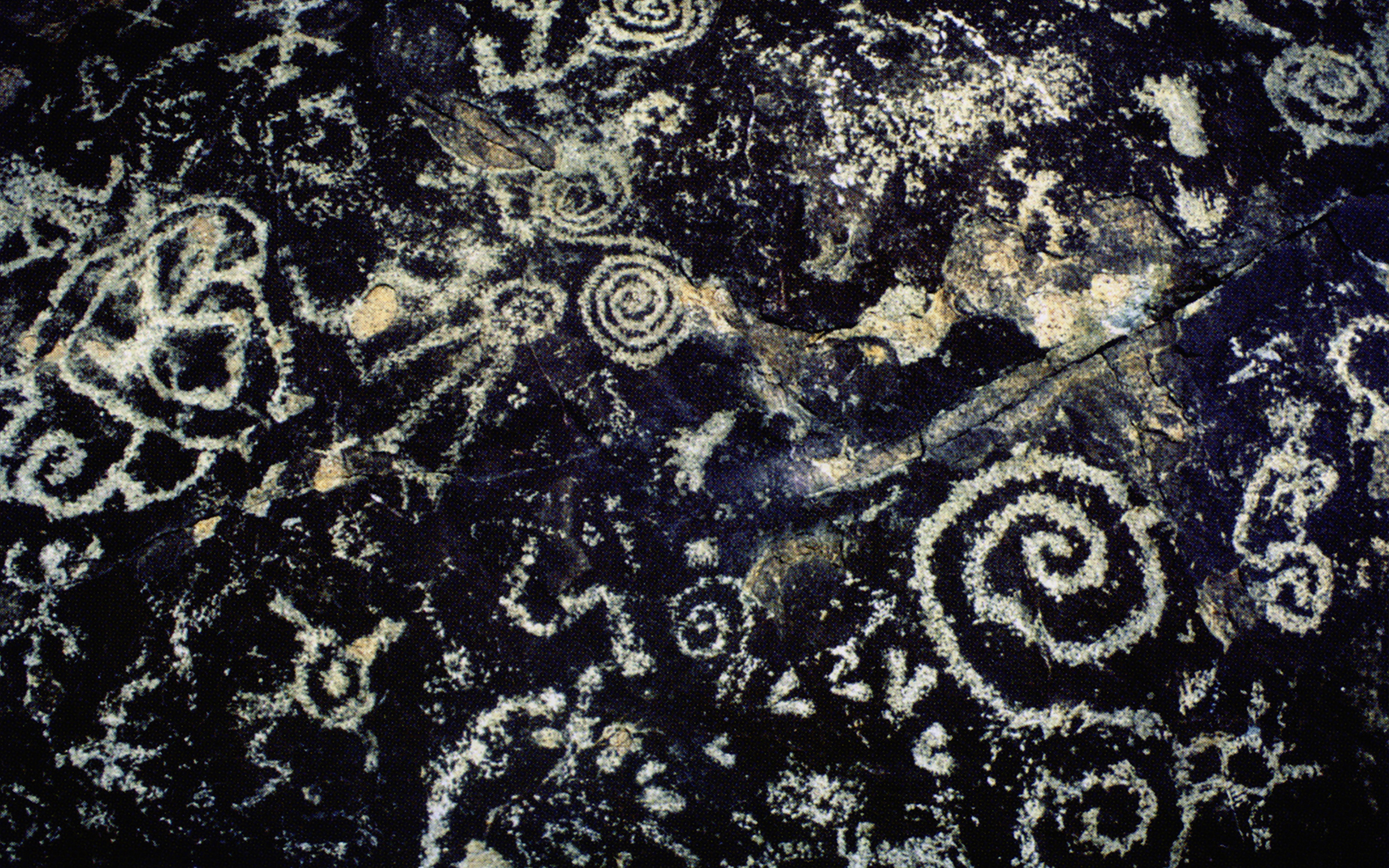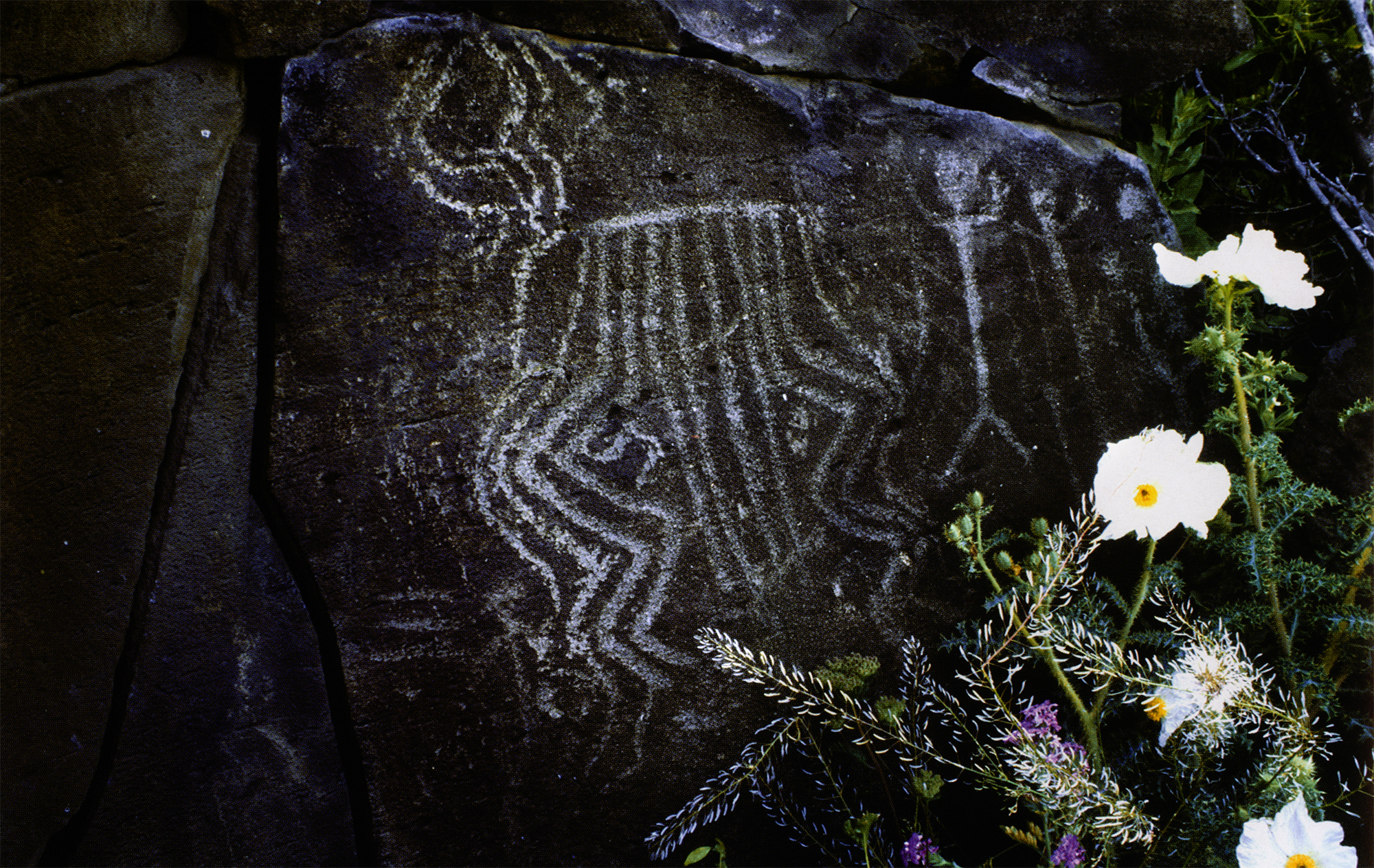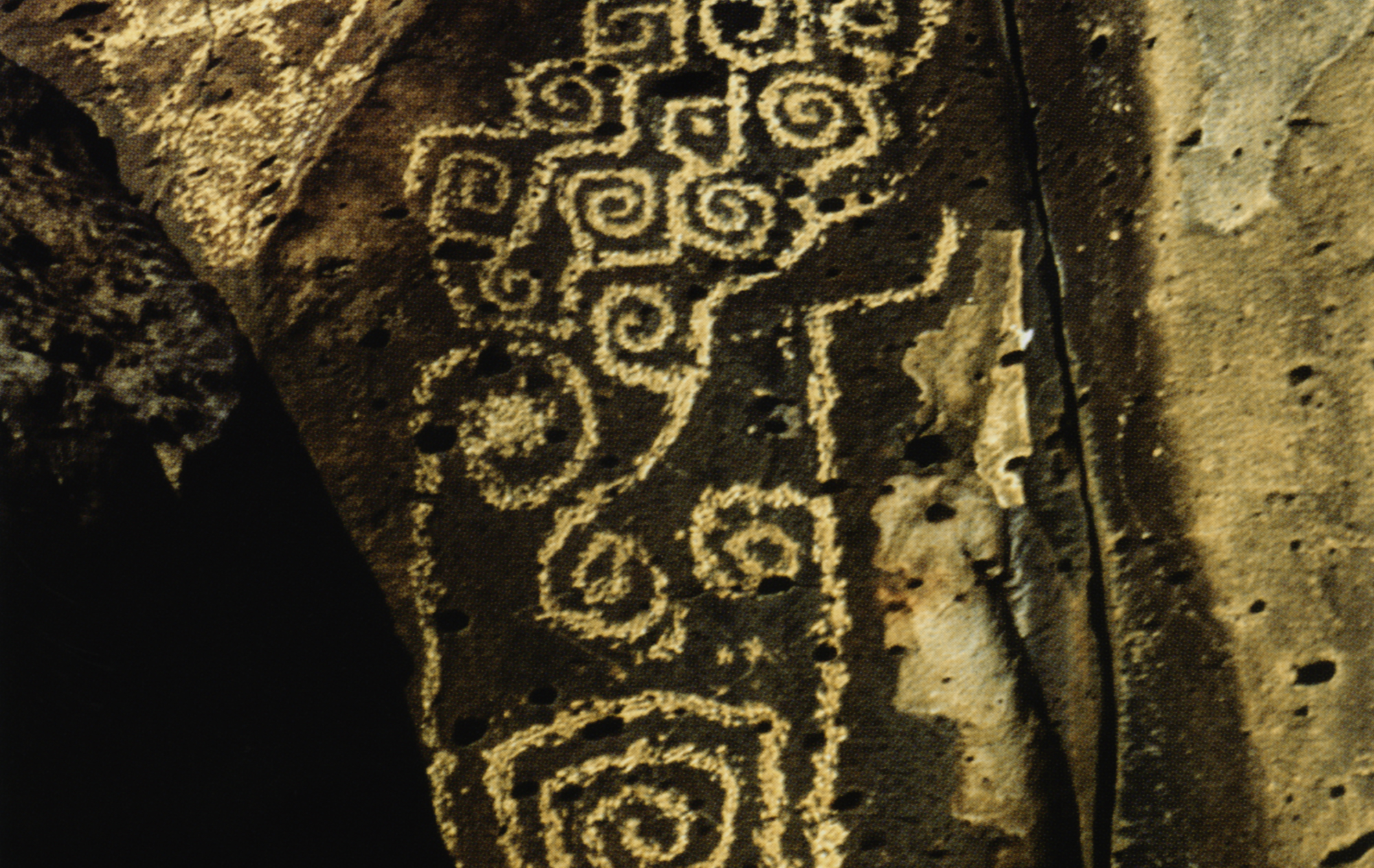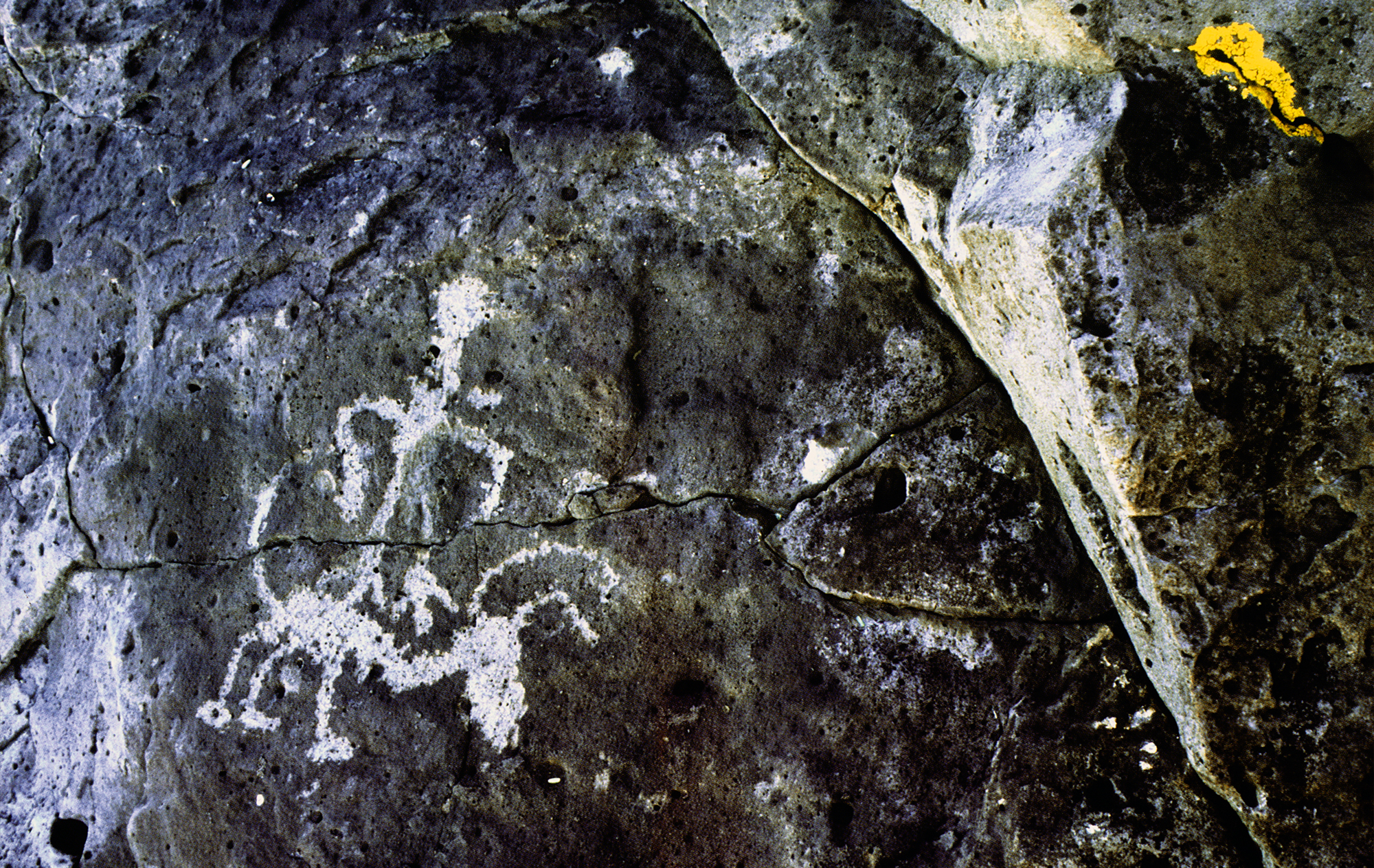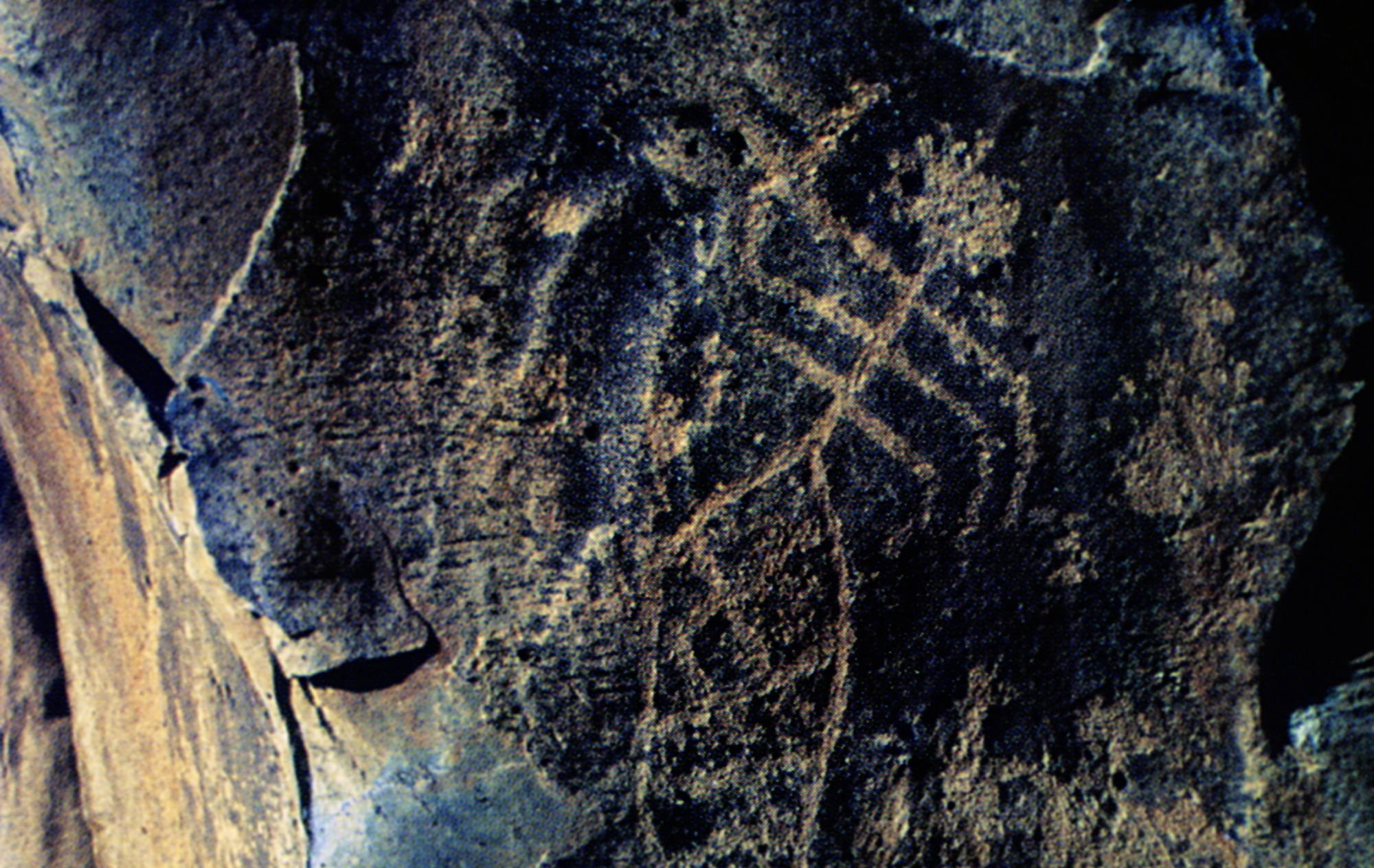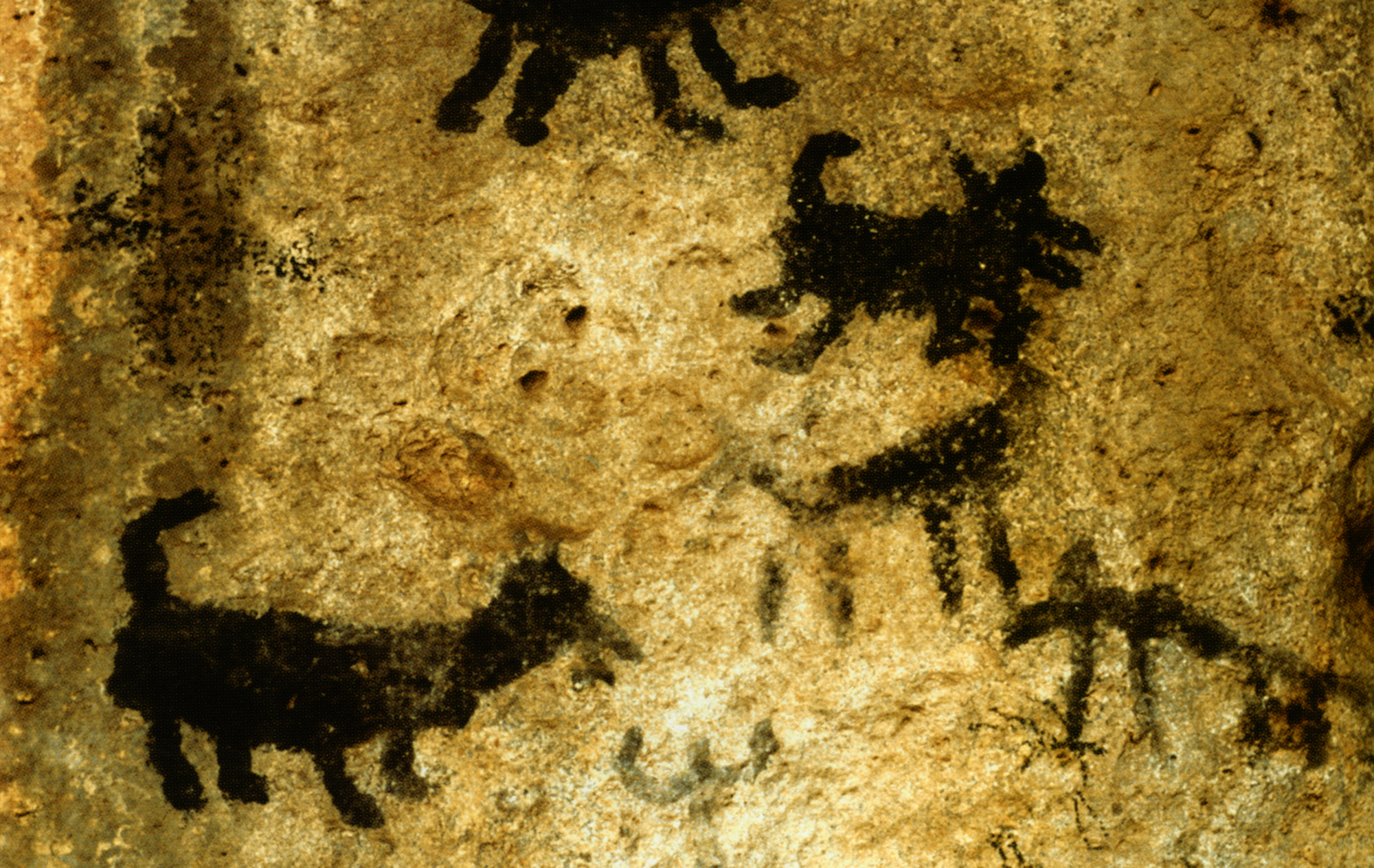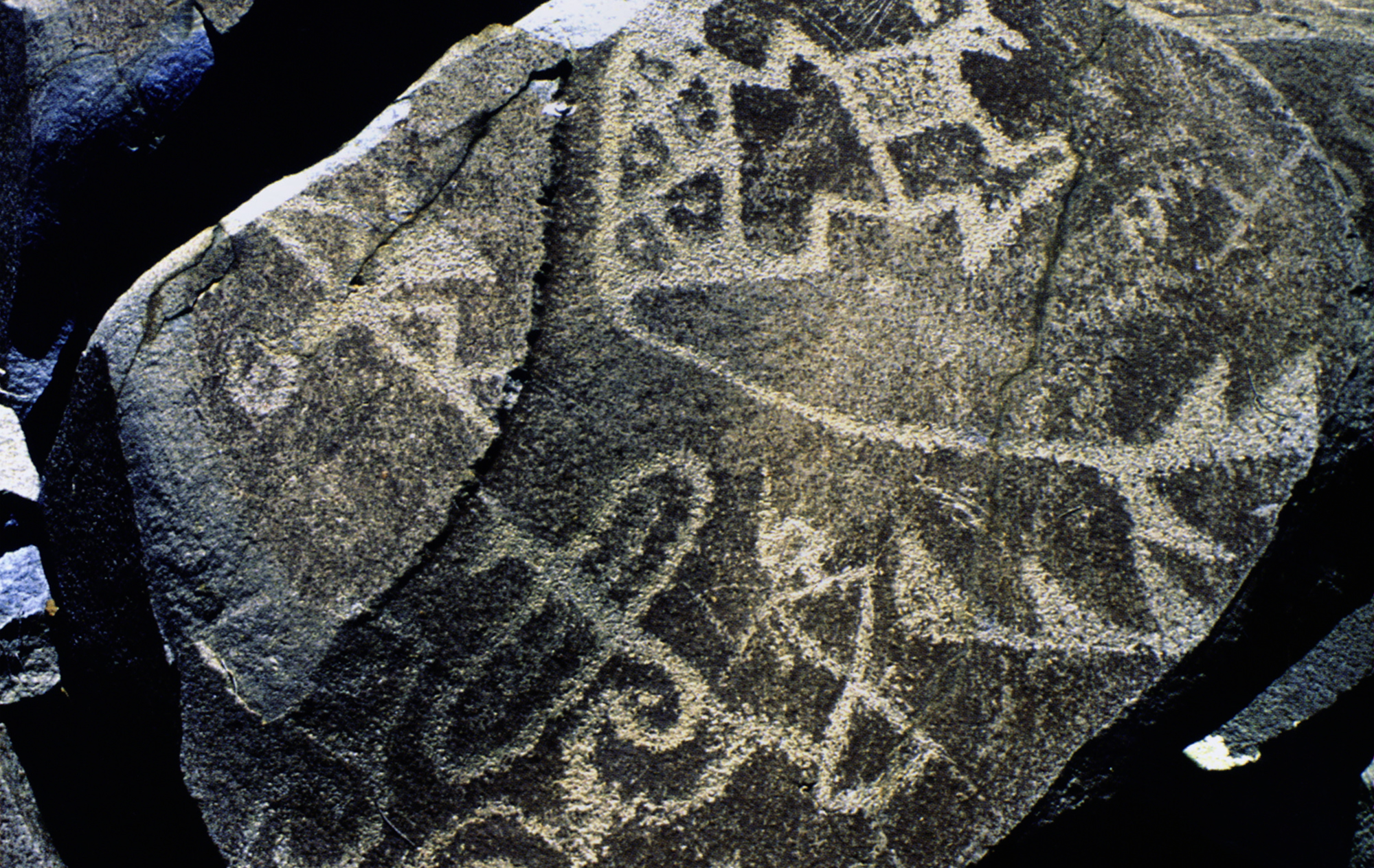


Arizona's post-Archaic art comprises a multitude of regional variations that developed quite rapidly and with noticeable stylistic differences after 1000 B.C. For this art the state has been divided into 7 provinces: the Northeast, Northwest, Central, Mountain, Riverine, Southwest and Southeast Rock Art Provinces.
The predominant rock art was originally referred to as the Anasazi Rock Art Tradition, named after the archaeologically defined cultural group that inhabited the area from at least 1000 B.C. to the beginning of the Protoiconic period, ca. A.D. 1540. Today, among archaeologists, the term "Ancestral Puebloans" has become the accepted norm. Originating in the Four Corners region from a hunting and gathering base, the Ancestral Puebloan cultural tradition reached its maximum geographic expanse by about A.D. 1000. In just over a millenium of development, this tradition reached its architectural apex in the remarkable cliff dwellings so well known to the general public. The rock art is widespead and abundant, with hundreds of large and complex sites on record. There are also several localized styles. The tradition is overwhelmingly represented by petroglyphs. The area has been divided into three major archaeological periods: Preformative, Formative and Protohistoric/Historic.
The Preformative (1000 B.C. to A.D. 400) is the earliest archaeological horizon, and is generally equated with the Basketmaker II period characterized as a time of transition from a primarily hunting-foraging subsistence economy to a horticultural economy. The art is known as the San Juan Anthropomorphic Style (1000 B.C. to A.D. 400) and the subsequent Chinle Representational Style (A.D. 400 to 700). There are many large, broad-shouldered anthropomorphs, often elaborately decorated, with drooping hands and feet, in both painted and engraved forms. Motifs include bighorn sheep and relatively small anthropomorphs, including flute players. There are hunting scenes with a multiple of elements suggesting a narrative content.
The Ancestral Puebloan rock art of the Formative Period (A.D. 1000 to 1500) exhibits a great deal of stylistic variation. There is an explosion of new motifs; anthropic depictions now include clearly gendered females, many figures portrayed in hunting, birthing, or ceremonial contexts, and numerous flute players. Zoomorphs now include mountain lions and bears. There are kachina figures (supernatural gods prayed to for life-sustaining blessings) and masks.
From about A.D. 1500 onward, Protoiconic and Historioiconic rock art is broadly covered by Hopi and Navajo Rock Art Traditions, characterized by petroglyphs. Many of the images were produced with metal tools, with fine, deeply-incised lines. Large images were incised where the inner matrix was then removed to give a bas-relief effect.
In this province the earliest archaeological phase of the post-Archeoiconic period is known as the Preformative. During this span, which lasted from 1000 B.C. to A.D. 400, horticulture made its initial appearance and was slowly adopted by the Archaic hunter-gatherers. There are three rupestrian styles: the Tusayan, Snake Gulch and Cave Valley. The Tusayan - the oldest - consists of painted images, executed in monochromatic red and maroon. Motifs include fine-line abstract-geometric designs as well as anthropomorphic and zoomorphic designs.
The Snake Gulch Style is defined by highly stylized anthropomorphic figures, often depicted with dot headdresses, bichromatic ear bobs and necklaces. Zoomorphs also feature in this style. There is a wide variety of colour.
The Cave Valley Style, the most recent (A.D. 400 to 900) is defined by human figures with inverted triangular or trapezoidal heads and torsos. These are predominantly painted.
This area of mountainous plateaus is the most difficult to define in terms of archaeology; it was a multicultural transition zone. This is reflected in the rock art. Pecking is the most common technique. Engraved sites are small. Individual glyphs vary widely in quality of execution. The dominant motifs are quadrupeds and anthropomorphs, including stick figures and lizard-men. Some figures possess up to eight extra arms and/or legs. The geomorphs are rectilinear, curvilinear and sometimes incorporate huge spirals. There is a major concentration of pictographs around Sedona; these monochrome and polychrome paintings are finely crafted, with striking motifs of huge, stylized, multicoloured serpents. There are also sun and shield designs. Two of the shield depictions have been dated by AMS analysis, resulting in a calibrated date of A.D. 990 and A.D. 1410.
Dominated by rugged mountain terrain, the Mountain Mogollon people occupied this region from about A.D. 200 to 1350. The rock art includes both pictographs and petroglyphs, with a variety of styles. The petroglyphs include abstract-geometric designs as well as unusually tiny depictions of mountain lions, water birds, flute players, masks and quadrupeds. Pictographs exhibit a variety of colours.
Here we have the Hohokam Rock Art Tradition; between A.D. 400 and 600, a culture dependent on small-scale irrigation agriculture as well as hunting and gathering, with large-walled compounds and multi-storied adobe structures. The culture produced distinctive ceramics. The rock art is mainly petroglyphic, with both representational and geometric motifs. Craftsmanship is extremely variable. Hohokam pictograph sites are few, scattered throughout the province, and images are generally painted in red, although black is sometimes used.
In this hottest and driest part of Arizona, the paleoart is attributed to the Patayan Rock Art Tradition, from about A.D. 700 to the time of European contact in the late 1500s. The rock art is primarily petroglyphic; anthropomorphs with oversized fingers and toes, avian species such as spread-winged eagles, and quadrupeds such as deer and bighorn sheep. There are also diamond and shield motifs. Earth works consist of geoglyphs, or intaglios, and rock alignments or petroforms. The geoglyphs, involving scraping the desert pavement to expose the lighter coloured subsurface, are usually 10 to 50 metres in length. Rock alignments are rarer, and fewer than a dozen have been reported.
This highly elevated region of grasslands and mountains houses the Mogollon Red Pictograph and the San Simon Petroglyph Styles, with perhaps others yet to be discovered. The pictographs are the most widespead and abundant. There are also (apparently unique) black charcoal-based pictographs which have been dated between A.D. 250 and 400. There are examples of the Apache Rock Art Tradition, generally painted with a finger using various colours.
With the proliferation of regional rock art styles in the post-1000 B.C. period, rather than address each style individually in terms of possible function and motivation, an overview of the most prevalent theoretical positions is offered. This interpretive approach is governed by the concept of human universals, those commonalities that underlie the physical and psychological make-up of human beings. For at least tens of thousands of years, all humans, equipped with the same model brain and born into the same model universe, are thought to have behaved fundamentally in the same manner, experienced the same emotions and displayed the same drives and needs. Moreover, the propensity to believe in gods or the supernatural is a quintessential trait of the human condition. Much of the world's paleoart was motivated by what is traditionally called "religion". Religion, used here in a very broad sense, is perhaps best defined as a "magico-spiritual strategy for life's sake".
It is generally accepted that the oldest and most prevalent of humankind's religious ideologies was of a shamanistic nature. Biologically grounded in the neuropsychological constant of the human nervous system, shamanism is widely held as the basis for rupestrian art, with many of its motifs attributed to hallucinatory visions resulting from altered states of consciousness. This does not apply to all aspects of the art; shamanism is merely an interpretive key to imagery of a surrealistic nature. Shamanism is not restricted to hunter-gatherer societies; the emergence of horticulturalists and farmers in the post-Archeoiconic era did not necessarily lead to the extinction of shamanism, at least not in Arizona.
In the American southwest, Hopi shamanic practices included the ability to transmogrify into various animals. Also within the narratives are magical flight, healing, human-animal transformation, tiered cosmology and guardian spirits, among many others. Evidence that the visionary imagery experienced by the shaman may be the source of design elements, motifs and compositions is found in many types of rock art (Hedges 1982).
Humans strive to attain certain desired results or events by ritually impersonating them, acting them out dramatically, or, in the case of rock art, depicting them graphically. This is most often associated with rupestrian game animals. The sympathetic hunting magic hypothesis was first used to explain the nature and purpose of European Ice Age paintings, and later the hunter-gatherer art of the American west, especially in post-Archeoiconic times. Sympathetic magic may have been employed to help increase the availability and long-term proliferation of game animals, for example with the portrayal of pregnant ungulates. Evidence for the principle of compulsive magic - the intention of bringing about specific wished-for results by mimetic means - is easily found in ethnographic accounts of present-day Puebloan cultures.
The percentage of sexually orientated themes in Arizona's rock art is astonishingly small. However, there are examples such as the vulva motif in the form of ovals with short interior lines, split circle motifs, and renditions of inverted Vs or Us partly bisected by short vertical marks. These may have represented the progenerative power of women. Some masculine anthropomorphic figures in the north of Arizona are depicted with pendant phalli. These may have represented masculine energy vital for the sustaining of life. Scenes depicting explicit sexual activities are extremely rare.
More secular and less metaphorical purposes of the rock art include the deep-seated human desire to express the "self" creatively, marking places of significance, territorial markings, memory aids, preserving stories for posterity ("trophyism" - the hunting and display of trophies to impress others), celestial phenomena and calendric determinations (temporal orientation techniques that involved the sun, the moon and the stars), totems to indicate an individual's or a group's ancestral descent, and marking specific events.
Traditionally the interpretation of rock art has focussed primarily on the imagery's syle and motifs, but the fact that the art is fundamentally situated in the land has led to an understanding that landscape and site need to become part of the interpretive scope. Humans tend to humanize and enculturate the land in which they live. The construction of camp and habitation sites, the establishment of trail systems, and the selection of areas for hunting, fuel-gathering, mining, foraging and other activities generally entail visible changes in the land. Naming, "storying" and ritualizing, on the other hand, are far less intrusive. As a result of these humanizing endeavors, people create what is called a "mindscape" which renders their environment familiar and ultimately facilitates its ideological control (Ouzman 1998b:419).
Basic to imposing a particular mindscape on the land is the human habit of developing an attachment for certain aspects of the environment, such as high mountain tops, caves, springs, dramatic rock formations, acoustical properties, and other extraordinary topographical features. This special relationship between humans and nature, when manifested as reverence for the earth, is called "geopiety". By enhancing the power of place through rock art, locations take on an aura of the sacred.
Whatever the motivating factors for the selection of a rock art site, once established, its range of possible functions must have been manifold. For shamanic cultures, the site may have been an active portal to the spirit world. On the other hand, a site may have functioned as a shrine, a devotional center or ceremonial retreat. Some sites within the landscape were designed for individuals, for privacy. Some sites, known as supersites, were for designed for and used by entire groups.
We will never know the full extent of the significance or functions of Arizona's paleoart or what motivated its earliest artists. At best, one can probably say that rock art, at its deepest level, constitutes a means of graphic communication in which the psychobiological needs of art and religion, shared universally by the human species, come together with the goal of enhancing survival. Arizona's and the world's rupestrian art may, indeed, be seen as "art for life's sake."
→ Subscribe free to the Bradshaw Foundation YouTube Channel
→ America Rock Art Index
→ The Rock Art of Baja California
→ Baja On Film
→ California Rock Art Foundation
→ Baja In Search of Painted Caves
→ Baja Great Murals Gallery
→ Sierra de San Francisco
→ Baja 2018 Expedition
→ The Rock Art of the Lower Pecos Canyonlands
→ Color Engenders Life
→ The Rock Art of Arizona
→ The Rock Art of Nevada
→ Coso Sheep Cult of East California
→ Coso Range Rock Art Gallery
→ The Rock Art of Moab Utah
→ The Rock Art of the Oregon Territory
→ RAN - USA Colloquium 2018
→ Removal & Camouflage of Graffiti
→ Graffiti Dates & Names
→ Vandalised Petroglyphs in Texas
→ Preserving Our Ancient Art Galleries
→ Bradshaw Foundation
→ Rock Art Network
